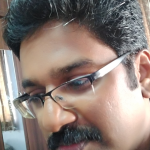Candid Conversations / Library Presentations
The presentations listed here will be available on the ConVEx platform. During ConVEx, you’ll have an opportunity to join a Zoom room to interact with presenters and your fellow professionals in a small group, live chat setting. Each presenter is available for 1 hour to discuss their session, answer your questions, and explore the topics deeper with everyone in attendance.
 How Mature Is Your (Digital) Content? How Mature Is Your (Digital) Content?Pim Bekker, Etteplan | Tuesday, April 27 at 6:30 ET |
  Scaling Videos for Documentation and Training by Reusing DITA Content Scaling Videos for Documentation and Training by Reusing DITA ContentBen Colborn, Nutanix & Mark Hellinger, Videate, Inc. | Tuesday, April 27 at 17:30 ET |
 Diagrams As Code With PlantUML Diagrams As Code With PlantUMLRoger Hadley, Fiserv | Wednesday, April 28 at 16:00 ET |
 Structuring Your Images for a Seamless Content Experience Structuring Your Images for a Seamless Content ExperienceRegina Lynn Preciado, Content Rules | Monday, April 26 at 18:30 ET |
 Video Content Is Not As Hard As It Seems! Video Content Is Not As Hard As It Seems!Shane Rose, 3M | Monday, April 26 at 15:00 ET |
Title
Abstract
What can the audience expect to learn?
Benefits?
Meet the presenter

Enter Bio here
Title
Abstract
What can the audience expect to learn?
Benefits?
Meet the presenter

Enter Bio here
Automation As An Additional Quality and Productivity Driver
A general topic drawing attention to the fact that DITA not only allows improving quality and productivity through the content reuse, but also because DITA content is much easier to generate automatically than the content of “traditional” publishing formats such as FrameMaker. Examples would include the generation of ditaval, a map of keydefs, summary tables using indirect cross-references and conkeyref-transcluded items, conkeyref pushes (that today are not correctly resolved as we know), and control register tables.
Meet the presenter

- 1989 – Graduated from Slovak technical university of Bratislava, Slovakia.
- 1989 – 1998: Tesla Orava – Nizna, Slovakia. Main activity – TV control software designer.
- 1998 – now: STMicroelectronics – Grenoble, France. Various jobs such as application engineer and team manager, product marketing on TV then on imaging silicon products, and finally technical writer. Working in Dita since 2018. Heavily engaged in information architecting, migration to Dita, and automation.
- I love wood working, wood turning in particular.
Creating Cohesive Writing Teams
Technical writing has traditionally been a career choice for the introvert who has been at the mercy of the development teams. Even writers working for larger teams or departments can often be siloed or shoehorned into one product they support, leading to a very lonely experience that lacks in support. With many organizations moving towards embedded writing models and sharing content in complex content management systems, building a dynamic, cohesive team is key to delivering quality content and retaining talent.
What can the audience expect to learn?
Managers need to learn how to facilitate cohesive writing teams. This can be achieved through purposeful hiring, thoughtful task assignment, collaborative approaches to daily work, and consistent communication. Join the discussion on how two managers at Mastercard build team cohesion in a challenging embedded environment.
Meet the presenters

Richard Gebhardt has been with Mastercard 16 years as a senior technical writer then manager. His team creates technical documentation for the commercial space that supports travel and entertainment, purchasing, and fleet products and services. He is focused on how to leverage processes and consistency to improve the customer experience.

Tricia Kinman manages an embedded writing team for Mastercard, a global financial service corporation. Her team produces technical, user, and API documentation for fintech customers. She has been working in the technical writing industry for 9 years as a technical writer, information architect, and manager. She is passionate about problem solving, designing solutions to empower other writers, and cycling.
Digital Transformation at Varian: Turning a business imperative into an intelligent information strategy
Now, more than ever, Digital Transformation is becoming a business imperative. What does that mean for Technical Documentation teams?
At Varian, we believe Digital Transformation is about redesigning information around the user to provide them with fast, easy access to relevant answers wherever they are. How do you do that? How do you seize opportunities within your organization to drive your Digital Transformation strategy?
In this presentation we’ll share Varian’s Digital Transformation journey; how it started, how it progressed, how it impacted the business and our customers, how it survived challenges and continues to develop. Along the way, we’ll show you some of our achievements, some of the integrations with our tools, and share some ideas on our Digital Transformation roadmap.
What can the audience expect to learn?
Attendees can benefit from understanding the importance of Digital Transformation in their information strategy, and how it can impact their business and customers. Attendees can learn how to survive challenges and seize opportunities within their organizations to drive their Digital Transformation strategy. They can also learn about some potential integrations that could help them on their journey.
Meet the presenter

Nicholas Rowlands is an experienced Information Systems Architect, Global Information Management Strategist, and DITA XML CCMS Specialist who is currently the Manager of the Information Architecture and Systems team—part of the Global Product Labeling group at Varian.
Design 101 for Tech Writers: UX principles for omnichannel publishing
To maximize readability and retention, you need effective user experience design. Unfortunately, many organizations don’t have a dedicated graphic designer for documentation, so it’s up to you.
In this presentation, Nate Pacelli, Director of User Experience at Jorsek Inc, the makers of easyDITA, will provide helpful guidelines for your content’s omnichannel publishing. Grasp the fundamentals like never before and feel confident that your content is optimized for the reader’s experience.
Learn about:
– Page layout
– Typography hierarchy
– Margins and columns
– Bleed settings
– Line length and height
– Mixed media layouts
– Accessibility
All of these concepts will help transition your content from CMS to omnichannel ready.
What can the audience expect to learn?
Through this presentation, attendees will gain new understanding of fundamental design principles such as page layout, typography hierarchy, and design tips and tradeoffs. Through this knowledge, attendees will be able to ensure that their documentation is optimized for the user’s experience no matter what publishing channel they use.
Meet the presenter

Nate Pacelli is the Director of User Experience, Jorsek, makers of easyDITA. He’s also a Professor of Graphic Design at RIT, and Printing enthusiast. Nathan Pacelli advances products by creating design ecosystems that highlight usability while maintaining brand continuity. His background in traditional print design and experience in digital products gives him the unique advantage of making sure designs are consistent from end-to-end.
Practical Tips for a Successful Content Transformation
Technology continues to define the way in which our users consume content; the emergence of video among other mediums has optimization at the forefront of every content developer’s mind. How do we optimize our content for both today and tomorrow’s consumer? What happens to more traditional content, such as the written word? In this presentation, we’ll explore how to effectively create new and convert existing content for a new age.
What can the audience expect to learn?
The audience will learn practical tips on how to create new and transform existing content for more visual mediums.
Meet the presenter

Kevin is the z/OS Content Development lead for JES and TSO/E. He arrived at IBM with a background in journalism and interactive media, which fuel his passions for storytelling and the user experience. He’s currently developing an educational curriculum to help grow the video production skill set across the Design organization and increase video production for IBM Z Content Solutions. In addition to product work, he’s a proud P-TECH Mentor, Distinguished Toastmaster, and Adobe Creative Ambassador who’s deeply devoted to both personal and professional development.
 Lindsay Baer is a Content Designer for security offerings on IBM Z. She has a background in instructional design and education technology, and has created professional development, training, and educational content for non-profits, startups, and businesses. She has a masters degree in Instructional Technology and Media from Columbia University and is passionate about making content more usable, accessible, and suited to learners of all kinds.
Lindsay Baer is a Content Designer for security offerings on IBM Z. She has a background in instructional design and education technology, and has created professional development, training, and educational content for non-profits, startups, and businesses. She has a masters degree in Instructional Technology and Media from Columbia University and is passionate about making content more usable, accessible, and suited to learners of all kinds.
Documentation Strategy for SaaS products
When an organization decides to cater to the Cloud markets in addition to the On-Premises, the documentation needs to step-up to adapt to this change. Creating documentation for SaaS products necessitates planning, which includes multiple decision points. It needs a complete overhaul of the existing documentation processes, strategy, and style guide.
@BMC we implemented process changes to cater to the SaaS documentation a while back and are fine tuning it since then. In this session we will walk you through the changes and touch upon the factors that one needs to consider while formulating the documentation strategy for an Enterprise SaaS product. We will also talk about the challenges and the unknowns that we overcame.
What can the audience expect to learn?
BMC Software started to cater to SaaS customers 3-4 years back. We drew a completely new SaaS strategy for documentation. We will be sharing this journey with other technical writing professionals and help them learn from our experience.
Meet the presenter

Vaijayanti Nerkar – Vaijayanti has a professional experience of 19 years, out of which she has spent 15+ years in the field of Technical Documentation. Vaijayanti has been working with BMC Software for 15 years. She has been managing a team of Cloud Documentation for close to 5 years. Vaijayanti also has experience in translation and Localization project management.

Priya Shetye is an Information Developer Specialist with over 20 years of experience in varied verticals. She has been working with BMC for the past 14 years. In addition to content creation, she has worked on creating rich media deliverable for various products. In her current role, Priya works with the Information Design and Development teams across BMC to fine tune documentation processes and overall strategies to enhance the quality of the Solution documentation.
Suddenly, Everyone’s A Tech Writer
In the last twelve months, when we’ve all found ourselves spending much more time at home, we’ve also learned some new skills, some by choice and some by necessity. For many people, one of those skills is technical communication.
Teachers have had to show students and parents how to use online learning software. Healthcare professional have had to teach us how to wear facemasks properly. Gyms and sports clubs that have had to limit class sizes have needed to teach members to use their online registration systems. Late night talk show hosts have even tried to teach people how to vote by mail.
For those of us who do technical communication professionally, there may be lessons to be learned from all of this.
What can the audience expect to learn?
We can look at technical communication from the outside, in. Most of the things that folks have had to write up for others during this pandemic actually have documentation already. Thinking about why we still need these additional resources might help us communicate better in our professional capacity.
Meet the presenter

Helen joined Stilo as a technical editor. She now works closely with Stilo Migrate customers, helping them to analyze their legacy content and configure appropriate mapping rules. She also provides Migrate customer training and support. Helen has helped Migrate customers to convert tens of thousands of pages of content to DITA and custom XML. Helen holds a Bachelor of Arts in English from St. Francis Xavier University in Antigonish, Nova Scotia, and has pursued graduate studies at Queen’s University in Kingston, Ontario.
Collaboration Between Designers and Content Developers in Creating z/OS Solutions
As a content developer, I collaborated and reused XML- and HTML-coded content in preparing technical documentation for system programmers on the topic of System Recovery Boost for z/OS Version 2 Release 4, the operating system for System z mainframes. Our team worked together with experienced designers to define tasks to support customized setup and improve the user experience in the z/OS Knowledge Center at https://www.ibm.com/support/knowledgecenter/SSLTBW_2.4.0/com.ibm.zos.v2r4/en/homepage.html.
What can the audience expect to learn?
Our team in Content Design and Development collected all z/OS software information in one place that is needed to understand and utilize System Recovery Boost. We also reused the information seamlessly in the z/OS content library. In addition, we also provided an interactive starting point and access to a variety of resources for the customer system programmers.
Meet the presenter

Barbara Neumann is a Content Developer and Software Engineer in IBM Systems. She is a graduate of Vassar College in mathematics and holds and MBA from the University of Rochester. Barbara has presented on STEM topics and team building at Union College, Vassar College, Marist College, RPI, SUNY New Paltz, and the University of Rochester.
How to Power Up Your Content With a Global Content Strategy
As a member of the Technical Communication team, you are always looking for optimal content efficiency in all languages, as well as seamless processes. You suspect that a unified content strategy is only one step in that direction, you consider that your content and processes can be optimized for localization, but you don’t know what to do and where to start. Here’s an alternative: implement a holistic Global Content Strategy, so that your content is user and localization-ready, your processes efficient and you can support your company’s objectives.
With WhP’s help, several Technical Communication teams have successfully implemented a global content strategy, gaining 20 to 30% efficiency. WhP has industrialized the process, branded Strategic Steering, and offers it to Tech Comm teams wishing to become best-in-class.
The principal milestones of the Strategic Steering are:
- Formulation of corporate business objectives
- Benchmark of current practices
- Collection and Root cause analysis of pain points
- Change blueprint
- Pilot testing of corrective actions
- Content-wide deployment
The process is in a continuous improvement dynamic, to advance in small steps and integrate new tools and processes as the global content practices mature.
The methodology also includes the onboarding of stakeholders, the relationship with the other departments, the management of related documentation and the measurement of its performance.
What can the audience expect to learn?
This presentation, which presents the Strategic Steering methodology, shows the importance of continuously improving your content practices. As content gets smarter, faster, and more global, clicking on the TRANSLATE button is not enough.
The conference is for documentation managers, information architects, and localization managers with techno companies, regardless of their content expertise and maturity.
Meet the presenter

A graduate of the Ecole Centrale de Paris, Dominique is CEO of WhP since 2005. Before joining WhP, Dominique managed several multinational operations in Europe, the US, and South America. Based in France, Dominique strives to make localization rhyme with innovation. His passion for DITA has led him to position WhP as a specialist in DITA localization to help customers enhance multilingual DITA content. The company designs solutions that connect DITA and localization for higher reuse and term consistency, as well as faster review.
Dominique is an active member of the DITA community, both on and offline, and a fervent long-distance cyclist.
DITA-Powered Knowledge Base Made Easy
Providing your ecosystem with easy access to all the needed information is no easy task. While many recognize the value of creating a Knowledge Base – capturing, managing, and posting all the info needed can be daunting and often results in not creating a base or having one that is not used often. And, while using DITA content and a CCMS can automate the processes, the idea of burdening SMEs and contributors with new or complex technology stops many from pursuing a DITA-powered solution. Join this session and learn from Oberon clients who found there are easy solutions to this challenge. Using an easy-to-use web-based editor, they make it possible for anyone to be a Knowledge Base contributor, and it’s even easier for anyone to access the base of information with just a common browser and the proper permissions. Behind the scenes the information authored is captured as valid DITA, and the CMS tracks metadata, manages versions, and enables streamlined workflows. See how companies including [customers] are creating DITA-powered Knowledge Bases that meet all of their ecosystems needs and delight their users.
What can the audience expect to learn?
This presentation will show the added value DITA content brings to a dynamic delivery Knowledge Base. Participants will learn web based editors remove the burden of XML tagging, dynamic delivery enables fast and intelligent browser search, and how your entire KB system can be automated for fast and accurate information access from any device.
Meet the presenter

Vi Kellersohn is the Head of Marketing for Oberon Technologies. Vi leads the marketing efforts, manages strategic partnerships and supports key client projects. For over 20 years Vi has managed and executed all aspects of marketing for B2B technology organizations working with sales to increase revenues in the millions. Throughout her career Vi has lead marketing organization across all marketing functions including strategy, demand generation, reputation, and sales enablement. Additionally, she has developed and executed custom co-marketing campaigns in support of customer and partner engagements.
My Experience with Upgrading a Component Content Management System (CCMS)
In this presentation, I will explain my experience with NXP’s 2019 CCMS upgrade as the project’s Scrum Master. This project was NXP’s first upgrade since the initial CCMS purchase. During this upgrade, I managed outsourced project resources, Professional Services from the CCMS vendor, and Operations teams from other vendors. Overall, the upgrade was a success, as it was completed on-time and within budget. We did, however, encounter some unexpected issues. During this presentation, I will share the upgrade’s project plan, highlighting areas that needed more focus based upon our lessons learned. We hope that our findings will help others who are planning a CCMS upgrade.
What can the audience expect to learn?
The presentation will benefit those who are considering a CCMS upgrade from a Software as a Service (SaaS) provider. Based upon NXP’s experience with an upgrade, I will share how our next planned upgrade will be planned, resourced, and tested based upon our lessons learned.
Meet the presenter

My name is Maria Yenerich. I am a Scrum Master within the NXP Marketing Information Technology group. I have 20+ years of system management experience. I have an undergraduate degree from Creighton University and a Masters in Business Administration from University of Illinois.
DITA Topics to Microcontent: Doubling down on reuse
At Turbonomic we have use client-side transformation of DITA to HTML for a number of years. Our help system is a Single-Page App that performs the transform in the browser. We now perform that transform in the product GUI to present GUI tours, display topics for GUI items, and display microcontent alongside GUI controls.
This presentation will briefly review the architecture of our online help app and show how we integrated the transform services in the product. We will then look at metadata we use in our topics to control what we serve as microcontent. Finally, we will see how choosing different transforms for the same topics can increase reuse even further. If time permits, we can talk about the authoring experience.
What can the audience expect to learn?
In this presentation we will see:
* Microcontent in action
* The benefits of single source and microcontent
* How meta-data can slice and dice topics into microcontent
* How microcontent changes authoring and planning
Meet the presenter

Chris Despopoulos is an old hand at technical writing. He is currently Publications Manager at Turbonomic Inc. In this role, he works with a small team that uses Git to manage DITA source, and a number of home-grown processes that exploit DITA to manage docs as code, harvest content from source code (for the API docs), produce release notes, integrate with markdown and other formats, and rebrand the pubs product for a matrix of Agile teams and projects. Tired of waiting for the “experts” to do it, he designed and implemented 4D Pubs, a single-page app for online help… Static site, dynamic client.
Manage a High Performing Content Team: Lessons from Formula1
Let’s answer some questions you may have.
– Why are we talking about F1 at a content strategy conference?
Building and managing teams is all about people. It doesn’t matter what industry you are a part of. The principles of excellence can be leveraged anywhere. To design and execute the right content strategy, you need the right people in an environment where they can give birth to and cherish amazing ideas.
– Isn’t the comparison between creating content and driving a F1 car too ambitious?
Well, the current state of software products, the evolution of content itself, and the outlook of the technology industry dictate otherwise. Look at how complex software has become, thanks to the emergence of the cloud. It is no longer a one-person job. You need a team of architects, writers, developers, and managers to design, implement, and execute the right content strategy.
– What questions will the presentation answer?
* How complex is it to gather, create, and maintain technical content in the age of the cloud?
* What is expected of a top-class technical writer today?
* How do you build team morale and productivity in an ever-changing environment?
* How do you maintain stakeholder confidence?
* How is a Content Services Organization similar to a F1 team?
* How do you scale skillsets and people who have those skills?
The presentation will merge the following concepts with relevant examples and questions mentioned above:
* Hiring the right people
* Continuous learning
* Productivity
* Work environment
* Alignment to business needs
What can the audience expect to learn?
The presentation aims to elevate the public perception of content teams. It will draw parallels between the incredibly intricate organization of a F1 team and that of the content services organization. It is an attempt to romanticize the everyday jobs of content teams. This should provide managers a framework to create a work environment that commands excellence.
Meet the presenter

Ghaus manages a team of technical writers at Dell Technologies. This team creates and maintains user and developer documentation for Dell’s enterprise software products.
He has been in the technical writing industry for 14 years. His journey into the world of technical content began at America Online. He is passionate about empowering people, creating inviting work cultures, solving problems, and exploring world cultures on a motorcycle.
Reimagining Process Documentation Experience and Fostering Adoption
This presentation unveils a success story of rich process documentation experience impacting process adoption. It narrates how a global technology leader, which had gazillions of enterprise processes across its departments but limited and/or dated documentation leading to inadequate awareness about processes, inconsistencies in processes across geographical regions, and deficiencies in process adoption, leveraged the benefits of interactive process documentation to not only augment process adoption but also streamline processes and eliminate wastes. The presenter had the privilege of front-facing this engagement as a service provider and would describe how accurate stakeholder mapping, meaningful stakeholder and SME interviews and workshops, expedited adoption of a process mapping tool, walkthroughs with SMEs for content validation, and leadership support for timely sign-off led to the success of the engagement. It was a journey worth experiencing. It remains a great narrative of how rich content experience drives stakeholder satisfaction and process awareness.
What can the audience expect to learn?
The presentation uncovers compelling success strategy for a large process documentation engagement starting with a consultative documentation needs analysis, process documentation maturity identification leveraging industry best practices, techniques of stakeholder mapping, level-setting the right expectations with the stakeholders to gain support, choosing the right process mapping tool, developing “visual” process documentation to catalyzing process adoption.
Meet the presenter

Debarshi Gupta Biswas brings to the table more than two decades of experience in technical communication and knowledge management. As a technical communication strategist and solution architect, he likes conducting as-is state analysis and fosters a consultative approach to recommending a future state roadmap with a focus on providing significant ROI to the clients. Debarshi has extensive experience in developing end-user, process and system documentation for a multitude of lines of business. He has managed projects and programs end-to-end— both on-shore on long-term and off-shore — with involvement right from the start of the documentation development life-cycle. In his present role with Cognizant Technology Solutions based in India, Debarshi front-ends core program delivery, active business development, revenue and utilization ownership, responding to proposals, architecting solutions, hiring, conducting employee appraisals, managing geographically separated teams, and building and growing the competency. The changing face of content in the digital landscape continues to fascinate him.
Diagrams As Code With PlantUML
Diagrams that express a logic or task flow add significant value to our content. Yet when rendered as images for publication, they become out-of-reach for many of the standards-based capabilities commonly applied to text-based content. Capabilities such as branch/merge, single-source, reuse, chunking, variables, and localization are only marginally applicable to images. If these capabilities were available for diagram images at the same granular level as text-based content, we could overcome many of the barriers that make it difficult to implement a wide-spread use of diagrams.
This session presents a solution in PlantUML, which is a standards-based language that renders diagrams from textual descriptions and is supported by Oxygen XML Author DITA plugins. Since the source of the diagrams is text, many version control, single-source, and localization mechanisms apply. The PlantUML language also has mechanisms for reuse, chunking, and variables. Complex diagrams consisting of nested, reused, sub-diagrams are demonstrated. A few simplified examples provide starter templates.
What can the audience expect to learn?
PlantUML can overcome many of the barriers that make it difficult to implement a wide-spread use of diagrams. By understanding diagrams as code, many of the advanced capabilities of production-level authoring and publishing systems are unlocked, providing increased production and viable long-term maintenance for diagrams.
Meet the presenter

Roger Hadley has led teams in DITA projects ranging from converting content and training for beginning DITA teams to implementing authoring enhancements and establishing best practices for experienced DITA teams. With 18 years of structured content experience, Roger is a Senior Technical Communicator at Fiserv where he oversees a complex set of content in support of financial services systems. Roger also provides leadership to his team by analyzing content problems and crafting solutions with accompanying authoring environment support.
Video Content Is Not As Hard As It Seems!
It’s 2021 and video content is here to stay. Stakeholders want it, end users want it, and let’s just face it, so does everybody else. Yet, can a team of one (or a few) produce it without outsourcing to a vendor? As technical professionals, video creation can seem intimidating, but I’m here to tell you that you can do it! Engaging and professional video is easier than you think and it can all be done on a budget. With video content, you can impress your stakeholders, wow your end users, and bring your organization to the next level.
In this session you will learn all about technical video creation, including:
– Tips for managing video projects without going crazy
– Setting up a budget digital studio (for more that just video) in space you probably already have
– Creating professional video content quickly on the cheap
What can the audience expect to learn?
Creating engaging video content can seem challenging, but in this session, you will learn that it is not as difficult as you may think. This session will help you develop a game plan for introducing video into your organization’s content strategy.
Meet the presenter

Shane Rose is a Digital Content Engineer in 3M’s in the Personal Safety Division. In his role as an all-around problem solver, his primary responsibilities include managing technical content, translation and localization project management, process automation, and video content creation. He also has a side passion for storytelling through data visualization. He received his Bachelor of Science degree in Technical Writing and Communication from the University of Minnesota, where he is also pursuing a Master of Science degree in Scientific and Technical Communication.
In his free time, Shane enjoys spending time outdoors in his beautiful home state of Minnesota with his puppy, Chester. He also enjoys reading, learning about emerging tech, and spending time with his cat, Frankie, who is not a fan of Chester.
Enter Bio here
Step-By-Step Guide to Developing Schematron Rules
Schematron is a rule-based validation language. Has become an ISO standard since 2006 and it is a very popular language in the XML world. In the last few years, Schematron started to be used more and more and in numerous domains. In this tutorial you will learn how to create ISO Schematron schemas, how to use XPath to express your constraints, as well as how to validate your XML files using an ISO Schematron schema and create a report.
In this tutorial I will present how to create an ISO Schematron schema from scratch. I will explain the ISO Schematron schema structure, elements and attributes, and how you can express custom rules and constraints.
What can the audience expect to learn?
It is important to have a quality control over the XML documents from your project. To achieve this you can use Schematron schema in combination with an XSD, RNG, or DTD schema. Schematron solves the limitation that other types of schema have when validating XML documents because it allows the schema author to define the tests and control the messages.
Meet the presenter

Octavian Nadolu is a software architect at Syncro Soft Ltd, the company that produces Oxygen XML Editor. With more than 15 years of experience in working with XML technologies, contributor to a number of XML-related open source projects. I am also co-editor of the Schematron QuickFix specification developed by a W3C community group.
More with Less: Our journey to eliminate boring work
Whilst humans hate doing the same thing again and again, day after week after month after year, machines (as far as we can tell) love it. At ServiceNow, we embrace making our world of work, work better for DITA folk by reducing the number of touch points, build scripts, and mindless work. This presentation highlights how we used shell scripts, Git, ANT, and Jenkins to increase efficiencies in our Product Content build tool chain.
What can the audience expect to learn?
This presentation highlights how ServiceNow used shell scripts, Git, ANT, and Jenkins to increase efficiencies in their product content build tool chain.
Meet the presenter

Tom is a staff content engineer in the Product Content Engineering team at ServiceNow, which group is responsible for getting the documentation where and when it needs be for our customers, both external and internal. Drawing on his work history in technical writing and support, instructional design, and general sleuthing he (relentlessly, it must be said) increases the rate at which quality documentation is accessible.

Dawn is a staff content engineer in the Product Content Engineering team at ServiceNow, which is responsible for the documentation build tools infrastructure. She uses her background of decades of work in technical support, instructional design, content development, management and DITA to contribute to the ever-evolving technical capabilities of the business of content.
Improving Print Output from Structured Content
Traditionally print output from XML was either automated and boring, or manually created and good-looking. One was cost-effective, the other a significant cost-centre. Today’s expectation is for great quality output with readability, accessibility and brand identity all being tied up in the material you provide your end readers. This session will show how it is possible to have both automated and good-looking output with the option to add finishing touches to take it to the next level.
What can the audience expect to learn?
The audience will appreciate that, with the right tools, it is possible to achieve high-quality, good-looking output from their structured content in a cost-effective manner, saving production costs and improving readability and end-user engagement with their content.
Meet the presenter

Simon Taylor has spent his whole career working with structured content, from managing STM journals and typesetting academic books, through to delivering XML-based print production projects. Simon has been the Product Manager for Arbortext’s and PTC’s layout tools for the last 15 years and has faced these challenges with the belief that you should not have to compromise your requirements in order to use XML or our software.
Tell me what you want: Automated and contextualized release notes
ServiceNow has used the benefits of DITA structured language to give customers the ability to filter their view of the product release notes. Since every customer has a different upgrade path, sometimes skipping entire release families, the ability to customize release notes has greatly improved the overall upgrade experience. This presentation will highlight the journey of customer research, design, and build tools to provide release notes in every flavor.
What can the audience expect to learn?
This presentation will highlight how ServiceNow identified customer needs, collected requirements, and used the structure of DITA and python scripting to massively improve release notes content.
Meet the presenter

Dawn Bunting is a staff content engineer in the Product Content Engineering team at ServiceNow, which is responsible for the documentation build tools infrastructure. She uses her background of decades of work in technical support, instructional design, content development, management and DITA to contribute to the ever-evolving technical capabilities of the business of content.

Stephanie Lee is a Senior Staff Program Manager at ServiceNow, where she leads the Product Content organization’s release management processes, including release notes. She enjoys building strong relationships with cross-functional partners and melding multiple perspectives to improve documentation, optimize processes, and create seamless customer experiences.
SEO for Docs: Find the needle, skip the haystack
If you have come across the subject of search engine optimization, you have probably discovered that most concepts relate to marketing and sales. Learn how Teradata redefined what SEO means to our documentation, how it relates to our business goals, and how we went from novice to experts in just one year.
In this presentation, we’ll share practical ways to measure and manage findability for large volumes of enterprise content. We will cover different aspects of SEO, including technical and content improvements. Being a long-time DITA shop, we will also talk about how we implemented SEO in DITA.
What can the audience expect to learn?
Get practical advice and learn scalable practices for SEO for large volumes of technical documentation, including legacy content and multiple releases. Understand why you need to invest in SEO, and what the opportunities are when you do.
Meet the presenter

Kirstin Maurer is the product owner of docs.teradata.com, and program manager of all sorts of things content-delivery-related. She is also a certified a Search Engine Optimization ninja.
The Relationship Between Context Experience and User Experience
“Some people think design means how it looks. But of course, if you dig deeper, it’s really how it works.” – Steve Jobs
In this session, Hal Trent and Travis Stevens of TransPerfect provide guidance to dig deeper to understand how content experience has a direct correlation to user experience based on the relationship between the content development and user experience teams.
Content development teams directly affect user experience with the content they create. The user experience often is a reflection of how well the content teams followed four core aspects of a successful content strategy (substance, structure, governance and workflow). Similarly, user experience teams follow four core aspects of user experience (utility, usability, appeal, and engagement) which directly affect the user experience.
The problem is that both teams do not always fully understand how each team employs their core principles for an optimal user experience. Trent and Stevens will present a user experience maturity model to help improve the relationship between the teams. The model also helps to measure and improve the user experience.
What can the audience expect to learn?
Attendees will walk away with a better understanding of a less discussed, but equally valuable strategy in content design. By building upon the content maturity model to quantify user experience, content teams will have a clearer understanding of the relationship between the core aspects of a good user experience and the core aspects of a successful content strategy.
Meet the presenters

As the landscape for consuming content changes, Hal Trent guides and provides solutions to companies to ensure their content management practices stay current and are ready for the future. He believes when content developers understand their content is a service to their customers, silos between content groups are removed, content lifecycles improve, and customer satisfaction grows. As a senior solutions engineer at TransPerfect with GlobalLink CCMS, Trent, works closely with software, translation, and sales teams, to ensure current and future customers are properly advised and provided the best information possible throughout the content management lifecycle.

Travis is a solution-driven professional focused on improving efficiency. Highly organized multitasking with expertise in scheduling projects, enhancing designs and verifying code. Proven experience developing custom JavaScript automation for Adobe lnDesign and Acrobat.
Three Customer Experiences Improved by CCMS and Artificial Intelligence
Of the many channels in which a customer experiences your company, three are strongly improved by the combination of component content management and artificial intelligence. These three are: retail-oriented chatbots, field service, and customer-facing expository writing (such as white papers and blog posts). In each channel, a component content management system (CCMS) links with an artificial-intelligence (AI) engine to provide highly tailored content that leads directly to the resolution of a customer issue, be it a purchase decision, an error condition, or a search for information.
This presentation provides details on how content is used in each customer-experience (CX) channel and how a CCMS and an AI engine improve the utility of content in that channel. Attendees will gain specific information and techniques they can adapt into scalable solutions to senior management teams that improve CX.
What can the audience expect to learn?
Attendees will gain specific information and techniques they can adapt into scalable solutions to senior management teams that improve CX.
Meet the presenter

Eric Kuhnen is the President of GlobalLink Vasont, one of TransPerfect’s GlobalLink CCMS solutions. He has more than 30 years of experience in product research, development, and management. Prior to his current role, managed global operations, product management, pre-sales, and marketing for Astoria Software, a division of TransPerfect, Inc. He has also held profit-loss responsibilities with GoRemote and Oracle Corporation. He has a Bachelor of Science degree in Computer Science from Brigham Young University.
Compassionate Technical Writing
Let’s face it: technical writing isn’t the type of writing that typically draws you in. It’s usually pretty dry —a utilitarian kind of writing that takes you from one task to another, and not much beyond that.
But it doesn’t have to be.
At Salesforce.org, the Documentation Team is committed to producing user documentation that not only shows our users how to use Salesforce, but also reflects empathy and awareness of the challenges they face.
We strive to create documents that are not only clear and technically accurate, but also let the reader know we’re right there with them, cheering them on as they wade through all the conceptual and technical challenges they face. We want every reader to feel like we’ve been there too, that we get it, that we’re committed to their success, that we care about them, and that we’re on their side.
Our compassion initiative has been extremely well-received by our community, colleagues, and the Salesforce leadership team.
Learn the techniques, strategies, and mindset we employ to genuinely incorporate compassion and empathy into our technical documentation.
What can the audience expect to learn?
Technology is constantly changing and can be challenging at times. Technical writers can help bridge the gap and bring about a better understanding of not only the technology but how to use that technology to make a positive difference in the world.
Meet the presenter

Robert Perry received a Bachelor’s Degree in Chemistry from the UNC at Chapel Hill, a Master’s Degree in Technical Communications from NC State University, and was an instructor in the Duke University Continuing Studies program for Technical Communication. An active member of STC for over 25 years, he served as President of both the Carolina and the New York Metro Chapters, is an Associate Fellow, and was a Director on the Board. He is currently the Director of Documentation at Salesforce.org, concentrating on creating content for products that enable organizations to engage their supporters online and manage philanthropic transactions across every channel.
Design Thinking: Creating Customer-Friendly Technical Content—Powered by Empathy
Enterprise software customers increasingly demand documentation that’s easy to understand—even if the underlying functionality is complex. Design Thinking is a set of practices for developing empathy. By shifting your mindset from a focus on technical features to one that generates great experiences, the principles of Design Thinking help you deepen your cognitive empathy with your customers—so you can converge on solutions that best meet their needs, while boosting your own creativity and satisfaction.
What can the audience expect to learn?
This presentation will help you shift your mindset from a focus on technical features to one that generates great experiences. Learning the principles of Design Thinking will enable you to deepen your cognitive empathy with your readers and give you new techniques you can apply to projects of any kind.
Meet the presenter

Former software engineer Richard Pfeiffer joined Genesys in 2004 after hearing they needed “a programmer who can write.” Many years of writing API docs and other complex technical content has led Richard to focus on making difficult content accessible to readers of all backgrounds. Richard is currently a Staff Technical Writer at Genesys, the company whose Experience as a Service software empowers organizations of all sizes to provide true personalization at scale, interact with empathy, and foster customer trust and loyalty.
Customer Site Visit – Obsessed, We Don’t Give Up!
Have you witnessed how your documents are used in real time?
We (the writers) have had data analytics gauge the documents clicked/downloaded, mostly used document types, and defects raised.
We all know DDLC defines plan, write, review/test, publish, and maintain. The key acumen of a technical writer is being user focused. Be it before writing or after writing. You might have heard about user analysis or personas. I had the opportunity to step into the user shoes, not in the company labs but at the user premises ????.
We were a team of four on the documentation for the product. As normal kids, we followed the KT and did what exactly was taught to us. Release on release, we did the same thing and we got the same result. At one time, I realized, we are doing good with 100% KPIs, 100% reviews and 100% tests, but we weren’t happy.
Our product announced its pilot deployment with one of our customer at Thailand.
So, my manager proposed that a writer may accompany the deployment engineer as a shadow assistant. The proposal took off and landed safely at Thailand, with a clear itinerary planned.
Itinerary
1. Understanding the user
2. Pre-deployment preparations
3. Required documents and readiness
4. The deployment
5. Pit stops
6. The flight crews
7. Customer feedback
Journey continues…
What can the audience expect to learn?
My presentation would focus mainly on showcasing how and what are the different opportunities that a technical writer has apart from their daily work that would contribute on improving the quality of their documents. This will be a fun presentation and an eye-opener for the audience to start thinking from a different prospective and understand that there isn’t any stopping.
Meet the presenter

My name is Vishal Prasad and I am a Technical Content Developer/Local Product Owner. I have 9 years and 8 months of experience in Technical Writing and Management. I have worked in Aerospace, Telecommunication, and Storage/Networking domains. I work with Cisco at present but prior to Cisco, I had worked with Dell EMC, Nokia Solutions and Networks, Safran Engineering Services, Lionbridge Technologies, and Capgemini India. Along with writing/ownership, I have been involved extensively in dealing with customers and managing quality and faults for my team. I am also an active participant/presenter of many national and international Tech Comm conferences for writers. I was also a trainer of DITA in my previous organization.
Apart from work, I enjoy adventure. I have done trekking, bouldering, rappelling, scuba diving, kayaking, river rafting, bungee jumping, fox flying, and many more. I wish to skydive next.
The journey I will discuss is what happened in my previous organization.
Getting a Fresh Perspective on Technical Writing
In the past six years, UX and content writing have become an important part of the software industry. They’ve introduced customer-centric solutions technical writers can leverage. Both content writing and technical writing are designed to delight the customer. But UX and most content writing happen at the beginning of a software product lifecycle and technical writing occurs at the end. This seminar introduces you to some basic concepts of content writing so that you, as a technical writer, can be involved earlier in the software development cycle and you can apply content writing concepts to improve your technical writing.
What can the audience expect to learn?
This seminar gives technical writers new tools and ways of thinking derived from UX and content-writing principles. You’ll learn how to user-test your documentation the way a researcher would. You’ll learn how content writers think so you can think about technical writing from a fresh perspective.
Meet the presenter

George Eckel has been in the technical writing field as a writer or manager for over 30 years. He was one of the very first technical writers at Amazon. He wrote many of the original documents for AWS services, such as S3. He has published best-selling technical books for New Riders, an imprint of MacMillan publishing. He’s worked for some of the highest-profile technology companies, including Silicon Graphics, Amazon, Intuit, and ServiceNow. He is currently a manager at ServiceNow.
Partnering to Develop An Industry-wide Standard for Inclusive Language
Inclusive language — using words that make our audience comfortable, and avoiding words that could offend — is good business, and it’s the right thing to do. Inclusive language, for example, means changing the software-security terms “whitelist” and “blacklist” to “allowed” and “blocked” list.
Late last year, our Information Development team at Extreme Networks made inclusive language a priority. By aligning this effort with the company’s diversity and inclusion (D&I) initiative, we gained both an executive sponsor and increased visibility within the company. We’re working to ensure that all written content — user manuals, training materials, web pages, and software user interfaces — is inclusive.
I found early on that there isn’t an industry-wide standard for offensive terms and inclusive alternatives, but that people very much want one. A company-wide survey at Extreme helped us home in on an initial list of terms, and I’ve begun partnering with technical writers at other companies to create and publish an industry-wide list.
What can the audience expect to learn?
In this session, you’ll learn how Extreme Networks is making its content inclusive and how I’m working with colleagues throughout the profession to develop a public list of inclusive terms. I also look forward to leading a discussion about how best to promote inclusive language and gain buy-in from everyone who creates content.
Meet the presenter

At Extreme Networks, Larry Kunz provides the Information Development team with the tools, training, and support they need to help customers succeed. Larry is a seasoned project manager and facilitator, having planned and executed numerous content-development projects. Those projects included forming teams, defining workflows, and launching tools solutions. Larry teaches the Project Management section of Duke University’s Technical Communication certificate program. An active member of the Society for Technical Communication (STC), he holds the rank of STC Fellow.
Developer Help Based on Training Courses
It’s a known problem that developers usually refer to help only when something goes wrong. A content developer who creates learning materials for developers often comes across a problem: How to teach a developer to write good code from the start? How to explain proper ways to use your product before a bunch of bugs disrupts your product’s work?
In this presentation, you will learn about Acumatica’s approach to educate developers. We put the most essential and useful information on developing for Acumatica ERP into training courses which contain examples and recommended practices. You will also learn about our approach to providing examples and assessing development skills using a set of training courses.
What can the audience expect to learn?
The audience will learn about an untraditional approach to providing help and educating developers. The audience will also learn how to construct a training course which contains theoretical part, step-by-step guides, and examples.
Meet the presenter

Master’s degree in software development
6 years of experience in technical writing (at the moment of the conference)
3 years with Acumatica
Current position: Assistant Manager of SDK
Case Study of Technical Content Improvement: Aspects, metrics, and results
In 2016, the technical-documentation team of NXP’s Automotive Processing business line embarked on a content-improvement (CI) initiative for its customer reference manuals. Aspects of CI include presenting content in the most effective form (favoring lists, tables, and figures instead of long blocks of text), attaining high editorial quality (eliminating errors in spelling, grammar, style, voice, tense, punctuation), producing professional-quality graphics, improving navigation with cross-references and bookmarks, and performing terminology management. CI substantially increased document usability and customer satisfaction. The initiative also measured many useful metrics, such as total page volume, team velocity, and average hours per page. This presentation provides details of CI aspects and the resulting metrics.
What can the audience expect to learn?
This presentation offers some insight on how someone could approach the improvement of technical content. I will also present some relevant information-development metrics, which are generally hard to find and which I’ve always found very valuable.
Meet the presenter

Michael Tsurikov is an information-development manager at NXP Semiconductors in Austin, TX, USA. He has worked in information development for 14 years. In his current role, Michael is active in both content improvement and content redevelopment. He is passionate about content quality and usability. Michael holds a Ph.D. in aerospace engineering and worked as a research scientist in laser diagnostics before transitioning to the world of information development world. When not developing documents, he is usually doing something interesting with his 4-year-old son or dancing with various international folk dance groups.
It’s All About The 3 Cs! Exploit the full potential of your content
The magic triple C of content quality: Consistency! Coherency! Correctness!
You have implemented a Content Management System. You have planned the investment thoroughly and considered the numerous advantages you now benefit from. But probably, there is still a lot of potential you do not use. Besides looking at content structure, versioning, and workflows, why don’t you go a step further?
With your decision to use XML based processes, you are on the right track to produce content which is consistent, coherent and correct in terms of structure.
But what about language and terminology? Improving your content regarding, terminology, style, grammar and more leads to increased consistency, coherency and correctness helping to achieve a better readability and translatability.
What can the audience expect to learn?
Torsten Machert will be discussing in detail, how your company can benefit from fully exploiting the potential of your content creation technology landscape.
Meet the presenter

Before joining Congree as Senior Consultant, Torsten Machert was Managing Director of EasyBrowse GmbH. He specializes in the design and implementation of workflows based on SGML and XML and has industry experience in aerospace, defense, engineering and publishing. In the past few years, he has concentrated on the development of industrial processes for the production and distribution of highly effective electronic publications.
The Art of Minimalism
When is a little too little and when is too much too much? Answering this question can lead to confusion and frustration for writers. If you are feeling this way, you are not alone. But what can the arts teach us about authoring minimalist content? Join us as we examine the various modalities of minimalism and use their works as inspiration in our practices of Professional and Technical Writing. We’ll talk about techniques you can adopt that may help simplify the art of balancing between too little and too much.
What can the audience expect to learn?
Art. Writing. Architecture. Poetry. Finding a way to connect with minimalism is the key to employing it for the benefit of your users.
Meet the presenters

Janice Summers, Single-Sourcing Solutions, specializes in helping people who’ve only ever used unstructured desktop publishing applications learn structured authoring. She’s been successfully transitioning Word users to XML authoring for the last 15 years and hasn’t lost anyone yet!
 Liz Fraley, Single-Sourcing Solutions, is a serial entrepreneur. She’s founded two companies, sits on the boards of three non-profits, and is constantly coming up with new ways to share knowledge in the technical communications and content industries. She has worked in high-tech and government sectors, at companies of all different sizes (from startups to huge enterprises). She advocates approaches that directly improve organizational efficiency, productivity, and interoperability. If you ask her, she’ll say she’s happiest when those around her are successful.
Liz Fraley, Single-Sourcing Solutions, is a serial entrepreneur. She’s founded two companies, sits on the boards of three non-profits, and is constantly coming up with new ways to share knowledge in the technical communications and content industries. She has worked in high-tech and government sectors, at companies of all different sizes (from startups to huge enterprises). She advocates approaches that directly improve organizational efficiency, productivity, and interoperability. If you ask her, she’ll say she’s happiest when those around her are successful.
A Tale of Two Transformations
What separates a smooth structured content transformation from a not-so-smooth transformation? The fastest path to structured content takes more than a strategy and more than a system. It takes a flexible mindset. This session presents a candid look at lessons learned from two separate projects. One was relatively smooth sailing from start to finish. The other was a storm-tossed voyage, filled with delays, ill-advised shortcuts, and headaches.. Find out what one technical publications team did right, what they could have done differently, and what they did after in their great migration from an unstructured jungle of documents and files to a modular metropolis of content harmony.
What can the audience expect to learn?
Attendees will learn valuable tips for how to make a move to modular content a success. You’ll learn the value of strategy and the benefits of taking small bites when undertaking a content transformation. You’ll take away an accurate description of what a successful transformation looks like in the real world and the benefits of open-mindedness, flexibility, and patience.
Meet the presenters
 Jonathan Chandler is the manager of the technical publications department at Intralox, the world’s leader in modular conveyor belts and conveyance technologies. With close to 15 years in the world of tech pubs, Jonathan has spent time as a technical writer, editor, terminologist, strategist, and manager of writers. He holds an B.A. and M.A. in English, with a concentration in technical documentation, and lives in Atlanta, Georgia. When not talking about content, he enjoys spending time with his wife and daughter…usually talking about snacks or dogs.
Jonathan Chandler is the manager of the technical publications department at Intralox, the world’s leader in modular conveyor belts and conveyance technologies. With close to 15 years in the world of tech pubs, Jonathan has spent time as a technical writer, editor, terminologist, strategist, and manager of writers. He holds an B.A. and M.A. in English, with a concentration in technical documentation, and lives in Atlanta, Georgia. When not talking about content, he enjoys spending time with his wife and daughter…usually talking about snacks or dogs.
Jonathan Chandler is the manager of the technical publications department at Intralox, the world’s leader in modular conveyor belts and conveyance technologies. With close to 15 years in the world of tech pubs, Jonathan has spent time as a technical writer, editor, terminologist, strategist, and manager of writers. He holds an B.A. and M.A. in English, with a concentration in technical documentation, and lives in Atlanta, Georgia. When not talking about content, he enjoys spending time with his wife and daughter…usually talking about snacks or dogs.

Val Swisher is the Founder and CEO of Content Rules, Inc. Val enjoys helping companies solve complex content problems. She is a well-known expert in content strategy, structured authoring, global content, content development, and terminology management. Val believes content should be easy to read, cost-effective to create and translate, and efficient to manage. Her customers include industry giants such as Google, Cisco, Visa, Facebook, Microsoft, and Juniper Networks. Her fourth book, “The Personalization Paradox: Why Companies Fail (and How to Succeed) at Creating Personalized Experiences at Scale,” was published in 2020 by XML Press.
Val is on the Advisory Board for the Technical Communications Program at the University of North Texas. When not working with customers or students, Val can be found sitting behind her sewing machine working on her latest quilt. She also makes a mean hummus.
Transclusion Through the Ages
Transclusion has been coined in the 1980s to denote a concept that we are well familiar with nowadays, although maybe not under this name. We look at the concept of transclusion, in everyday life and in technical documentation. Also, how has it evolved over the last 40 years or so? We pick certain forms of implementing transclusion and inevitably will land with its realization in DITA. Transclusion touches general well-known questions of how to organize your contents and we will discuss this relationship in some detail.
What can the audience expect to learn?
A very basic, but important concept in documentation is dissected in the presentation, taking the audience back to the beginnings and on a journey through different implementations, thereby emphasizing modern realizations and how this impacts the ease of use that transclusion can be put forward in documentation work nowadays.
Meet the presenter

Frank Wegmann has 20+ years of experience in SGML and XML processing, both, in a research context in the area of natural language processing and, since 2000, in the field of technical documentation. At Software AG he has been involved in custom automated build system for documentation since 2001 and has been redesigning the DITA toolchain in recent years. He is a regular speaker at international conferences and engaged in OASIS committees, in the DITA TC as well as the Lightweight DITA SC.
How Mature Is Your (Digital) Content?
In this presentation I will dive together with the audience into the digital journey moving up the information maturity ladder.
What is the impact on technical content creators while moving more and more to digital content?
From PDF to dynamic, on what level are you in this journey?
On what level are you in the information maturity model referring to content structure, reuse, metadata, visualizations (animations, AR/VR), IoT, etc.?
What can the audience expect to learn?
Based on real examples I will show/question step by step what the impact is when moving away from traditional books into digital publications using a content delivery platform (CDP). Publishing content to a CDP gives you so many more possibilities. I like to have an interactive session with the audience and discuss the digitization journey.
Meet the presenter

Pim Bekker is a Senior Solution Architect at Etteplan since 2001, working on (DITA) XML structured content projects including Content Delivery Platforms, AR/VR and spare part systems.
He has implemented XML based Content Management Systems for creating technical information in over 175 projects using the best standards available, including DITA, SVG and iiRDS to create future ready content.
Improving Your Documentation Project With “Docs as Code”
According to the “Docs as Code” philosophy, one should be writing documentation with the same tools as code: issue trackers, version Control (Git), automated quality checks and continuous publishing, review and collaboration.
We will analyze a working Docs as Code setup that will be freely available on GitHub afterward so attendees will be able to fork it, work with it, gain a deeper understanding and apply these concepts into their own documentation projects. Although any text-based document format works, for the purpose of this presentation, a mixed DITA and Markdown project will be used in the demo setup.
What can the audience expect to learn?
Attendees will learn:
- What is Docs as Code and what benefits it brings
- What is Continuous Integration
- What is Continuous Delivery
- How to create a Docs as Code setup
Meet the presenter

Alex Jitianu has been working for more than 14 years as a software architect for Syncro Soft Ltd., the producer of the popular oXygen XML Editor. During this period, his main focus has been in XML technologies, the development of technical documentation tools and DITA-specific support.
Managing Change in a VUCA World
If we thought 2020 was surreal, in 2021 we will be continuing the crazy ride in our projects and organisations. How can you handle this? How do you navigate and support your teams in this VUCA world? What do you need to do to ensure success? During this session, we’ll discuss the basics of surviving in this very changing world and why change management will be one of the most important skills that you can cultivate in the next year as a leader.
What can the audience expect to learn?
Emily will give examples of how leaders can support their teams but also give relatable advice for navigating this difficult time for teams, organisations and leaders. VUCA can be difficult to understand and this presentation will explain what VUCA is and what opportunities it can bring to organisations and teams.
Meet the presenter

Emily is a renound international speaker with over 10 years experience in Project Management. She’s been supporting other Project Managers and leaders in sharing knowledge and learning about the skills they need to develop to overcome their difficulties. She specialises in working with remote teams and different cultures and enjoys volunteering and giving back to the community. When not working in Projects, she can be found running on trails in the forest.
Jumping Psychological (and Corporate) Hurdles When Moving to DITA
Based on my 35 years of experience as evangelist of various innovative technologies, this presentation lists the main hurdles we encounter when trying to move an organisation to usage of DITA. And even when DITA is adopted, lots of organisations resist any deviation from what they perceive as the standard.
From the initial decision to adopt DITA to implementing constraints, specialisations, keys and mapless publication chains – there is so much to gain from a DITA-based workflow and there is so very little that is being used today.
I will expose a number of common hurdles and clarify their psychological backgrounds, so that innovators can find the right types of arguments to convince their corporations of the benefits in using DITA the way it is supposed to work.
What can the audience expect to learn?
- Learn about the real issues with introducing DITA and find strategies to overcome these psychological hurdles.
- Learn about the false idea of non-standard DITA and why this is short-serving you as authors.
- Learn how to debunk invalid arguments against introducing and customising DITA.
Meet the presenter

Jang F.M. Graat studied Applied Physics, Psychology and Philosophy. After graduating in 2 majors from 2 different universities on the same day, he started a fast-track career in the high-tech supercomputer domain. In 1994 he started Smart Information Design. He has been using DITA since 2005 and has presented many innovative ideas at DITA conferences in Europe and North America since 2009. Most of his current projects revolve around helping large companies in adopting DITA and implement DITA customisations and reuse strategies, with or without a CCMS.
Let’s Blur the Lines Between Content and Technology!
A handful of content now sounds like a distant past, something from the monolithic period or so. We live in a technology world that is super flooded with content from OTT to MOOC and acronyms as well. However, with the recent COVID-19 experiences, the need to feel safe and cared for has become a new product prerequisite.
This means that it is critical to relook our content development approach to reach people with content that matters to them – where, when and how they want it – so that they feel safe and well-supported for accomplishing a task. It is now important to look at information from a completely different perspective and instead of focusing on technical details for users to read, it’s now imperative to curate information effectively to cater to the human information needs leveraging technology.
This also highlights the need to build content based on what the user needs with the technology they are using rather than delivering content as a standard package. The traditional PDFs must be complimented by technology and new content products that uses multi-media and multi-platform. This is an important aspect to consider as with the more intuitive products and smart devices, creating a personalized experience with the content that is credible, concise and usable to the content consumer is needed.
Here comes chat bots and micro-learning and a platterful of technology to use for creating a personalized experience that could turn into a just-in time learning opportunity. As technical communicators and content strategists, we must leverage technologies that learn and enrich the product experiences and balance experiential learning by providing a quick access to right-easy-to-understand information just when a user needs it, intelligently.
The is the new Technical Content Industry 4.0, and from the language of the product origination, we are shifting to the language of users. Alexa is learning!
What can the audience expect to learn?
- Content strategy for technology based content for audience engagement.
- Information gap to bridge by using technology like AI enabled Bots, micro-content, micro-learning addressing personalized content experience for users.
- Reconsidering content deliverables for technology available in the industry to establish deeper connections of content with the audience.
Meet the presenter

Dr. Anu Singh’s mission is to close the gap between experiential learning of a user on products they use for the first time through content. Anu’s expertise is helping business ensure the success of customers by supporting their product adoption journey. Anu possesses numerous degrees and certifications, and over 16 years of progressive experience in wide range of technical and non-technical areas including software documentation development, project management and leadership.
Anu is a creative disrupter who believes in the enormity of the human mind, its thoughts, feelings and the social paradigm it creates and coexists in. Her hobbies include learning, teaching, painting and travelling.
Outsourcing Technical Documentation: Best practices
Outsourcing of technical documentation has become inevitable. Are you ready to use outsourcing as a strategy to help your business?
In this presentation, the speaker would go over the below topics:
– Selecting the right vendor for your needs
– Putting in checks and balances to ensure documents are delivered on time, with high quality
– Engaging the vendor for short bursts of work, and effective handling when work dries out temporarily
– Using the vendor as an extended arm for your team
– Exiting from a vendor, transferring to another vendor
What can the audience expect to learn?
Outsourcing technical documentation has become inevitable in today’s business. The presentation would help the audience to understand how to select vendors and effectively managing them to deliver your documents on time and with high quality. We will also understand usual pitfalls in the process and how to avoid them. Done well, outsourcing can be a win-win solution for you.
Meet the presenter
 Vasanth Vaidyanathan is a thought leader in the area of technical publications with 21+ years of global experience. He has successfully led and managed distributed teams and projects both in India and U.S. He is very passionate about improving documentation quality. He is equally passionate about team building, mentoring, and growing employees. He has delivered talks and facilitated discussions in technical communication conferences and events. Vasanth is currently Senior Manager of Learning & Knowledge Services team in KLA, India. He holds a master’s degree in software engineering and has certifications in technical communications management and international business. Vasanth Vaidyanathan is a thought leader in the area of technical publications with 21+ years of global experience. He has successfully led and managed distributed teams and projects both in India and U.S. He is very passionate about improving documentation quality. He is equally passionate about team building, mentoring, and growing employees. He has delivered talks and facilitated discussions in technical communication conferences and events. Vasanth is currently Senior Manager of Learning & Knowledge Services team in KLA, India. He holds a master’s degree in software engineering and has certifications in technical communications management and international business. |
Creating Truly Reusable Content: The five dimensions of content standardization
The most common reason cited by customers for a move to structured authoring is content reuse. Organizations of all sizes have realized that creating the same content over and over again (via copy, paste, tweak) is inefficient and expensive. Having a single source of truth that is reused in many outputs, on many devices, saves time and money.
To be successful reusing content, you need to do more than break it into components. For content to be reusable, it must be standardized across five dimensions:
1. Output types
2. Words
3. Sentences
4. Paragraphs
5. Components
If you miss standardizing any one of these dimensions, you risk confusing your customer and hurting your brand.
In this presentation, Val will explain each dimension and provide practical information on how to standardize each one to create truly reusable content.
What can the audience expect to learn?
This presentation presents practical information on how to create reusable content. Rather than being theoretical or hypothetical, the information in this presentation will help attendees create content that can be reused successfully.
Meet the presenter

Val Swisher is the Founder and CEO of Content Rules, Inc. Val enjoys helping companies solve complex content problems. She is a well-known expert in content strategy, structured authoring, global content, content development, and terminology management. Val believes content should be easy to read, cost-effective to create and translate, and efficient to manage. Her customers include industry giants such as Google, Cisco, Visa, Facebook, Microsoft, and Juniper Networks. Her fourth book, “The Personalization Paradox: Why Companies Fail (and How to Succeed) at Creating Personalized Experiences at Scale,” was published in 2020 by XML Press.
Val is on the Advisory Board for the Technical Communications Program at the University of North Texas. When not working with customers or students, Val can be found sitting behind her sewing machine working on her latest quilt. She also makes a mean hummus.
Intent-Based IA: A methodical approach to designing information
All products continue to evolve, and legacy products by now have hundreds, if not thousands of features.
Information Design is often an after thought in the Technical Communication discipline. Good Information Architecture resonates with a well-articulated product design and is an integral part of an enhanced product experience. It saves valuable time, eases frustration, and provides customers a hand holding and seamless experience in getting their tasks completed while getting insights into the product. But do we have good Information Architecture methods and practices that we can deploy to understand product evolution and its changing needs and responses?
Technical Communicators need to approach Information Design with a rigorous method to improve the holistic experience of usage of a product. The method explored in the scope of this paper attempts at a perspective on Information Design, from the Products User-Experience.
What can the audience expect to learn?
It introduces a new design methodology that walks the audience through primary and secondary affordances – powerful ideas that helps demystify contemporary IA paradigms and helps them leverage their existing documentation libraries to better hand-hold customers into a seamless Intent-based Information Architecture.
Meet the presenter
 Vishal George Palliyathu is a seasoned Information Developer at Cisco, and has led several transformation and migration efforts with a strong focus on better information design and UX during his fifteen year experience at Cisco and IBM. He has experience across various facets of Technical Literature Publishing – as a DITA Strategist, Information Architect, Editor, Author, Build Smith and an Inventor with five patents and a paper published on the DITA framework. He has also presented at DITA Europe, tcworld, STC Summit, and various other conferences.
Vishal George Palliyathu is a seasoned Information Developer at Cisco, and has led several transformation and migration efforts with a strong focus on better information design and UX during his fifteen year experience at Cisco and IBM. He has experience across various facets of Technical Literature Publishing – as a DITA Strategist, Information Architect, Editor, Author, Build Smith and an Inventor with five patents and a paper published on the DITA framework. He has also presented at DITA Europe, tcworld, STC Summit, and various other conferences.
Understanding the content ecosystem to map microcontent
One of the least-explored areas for information architects is the examination of relationships between different types of information. Most often this is left to the devices of the author or the arcane arts of the taxonomist to determine what is related to what. Even if we can manage relationships between topics with some skill, managing the relationships between fragments of microcontent become exponentially more difficult. This session will explore the enterprise content metamodel to understand how information behaves in a larger ecosystem and map out a universal content model across any enterprise.
What can the audience expect to learn?
The audience will learn:
- Different types of universal content models used across industries
- How content behaves across the information ecosystem creating changes that cascade across other types of information
- How AI will play a role in associating blocks of information together for more seamless human interactions with your content
Meet the presenters
 Rob Hanna co-founded Precision Content in 2013 to change the way writers approach structured authoring. Having spent more than decade helping organizations move to component content management he realized that organizations need to take a step beyond technology and expert consultants. Without fostering the necessary standards and skills to work in this new media, organizations would continue to stall in their attempt to move to structured authoring. With this knowledge, he developed the Precision Content® methods, tools, and training. Today, Rob leads his team of industry experts to help make your information easier to use.
Rob Hanna co-founded Precision Content in 2013 to change the way writers approach structured authoring. Having spent more than decade helping organizations move to component content management he realized that organizations need to take a step beyond technology and expert consultants. Without fostering the necessary standards and skills to work in this new media, organizations would continue to stall in their attempt to move to structured authoring. With this knowledge, he developed the Precision Content® methods, tools, and training. Today, Rob leads his team of industry experts to help make your information easier to use.
 Peihong Zhu is a Junior Information Architect at Precision Content Authoring Solutions Inc, a technical writer, and a member of the Society of Technical Communication. With previous work experience in life science and bioinformatics, she has intimate knowledge about scientific research, pharmaceutical industry, and software industry. Armed with years of experience in researching, organizing, and analyzing information, as well as formal training in DITA, user experience research, and technical writing, Peihong is passionate about using her skills to communicate the importance of information architecture in content creation.
Peihong Zhu is a Junior Information Architect at Precision Content Authoring Solutions Inc, a technical writer, and a member of the Society of Technical Communication. With previous work experience in life science and bioinformatics, she has intimate knowledge about scientific research, pharmaceutical industry, and software industry. Armed with years of experience in researching, organizing, and analyzing information, as well as formal training in DITA, user experience research, and technical writing, Peihong is passionate about using her skills to communicate the importance of information architecture in content creation.
Seeing Double: How and when to reuse content
Does your organization have redundant content? Need help developing a content reuse strategy? Join Amber Swope as she walks through her methods for analyzing deliverables to identify redundant content and determining the right DITA mechanism for content reuse.
What can the audience expect to learn?
Information architects will learn:
- How to analyze deliverables to identify reusable content
- How to choose a DITA mechanism by studying reuse characteristics.
Meet the presenter
 Amber Swope is an internationally-recognized Information Architect, Darwin Information Typing Architecture (DITA) expert, and information architecture (IA) consultant. With over 20 years of information development experience and 15 years of DITA expertise, Amber specializes in helping organizations create opportunity through IA. She helps teams build scalable IA solutions to future-enable their content and empowers team members to advance their architecture as it evolves to meet new business needs. In her free time, Amber volunteers as a mentor with PDXWIT. Amber Swope is an internationally-recognized Information Architect, Darwin Information Typing Architecture (DITA) expert, and information architecture (IA) consultant. With over 20 years of information development experience and 15 years of DITA expertise, Amber specializes in helping organizations create opportunity through IA. She helps teams build scalable IA solutions to future-enable their content and empowers team members to advance their architecture as it evolves to meet new business needs. In her free time, Amber volunteers as a mentor with PDXWIT. |
Start at The Start: With your writers
The world is a demanding place for our content. Many of us are facing challenges around unifying our corporate content strategies or finding ways to deliver more with less or transforming our monolithic bodies of content into more consumable chunks. Tools and technology promise progress and efficiencies. But in order to be really successful in any change, transformation, or innovation, you have to start at the start, with the people who do your writing.
During this session, I’ll share some stories–both of success and failure–about how our team has been transforming along with our content.
What can the audience expect to learn?
We spend a lot of time focusing our innovation time, energy, and budgets on the tools and technology that promise progress. But people are at the heart of any content practice and investing in their upskilling to support your evolving vision and goals is not always easy but it’s also not optional.
Meet the presenter
 Angela Browne is a Director of User Assistance and Design Thinking coach at SAP where she leads a large, global content team and drives strategic information experience initiatives across the product ecosystem.
Angela Browne is a Director of User Assistance and Design Thinking coach at SAP where she leads a large, global content team and drives strategic information experience initiatives across the product ecosystem.
Inside Out or Outside In?
Defining the levels and types of style guides, some basic tips for getting one started (for each kind), where to start, what to include, and some ideas for making them useful (and usable) by internal and external content developers.
What can the audience expect to learn?
The perspective you write from changes how you write. Oftentimes, we write from Inside the company and we delve into explaining features and showing how the technology works for users. What’s missing is the user and what matters to them. They are viewing your carefully written documents from the outside in. Learn how to change your perspective!
Meet the presenters
 Liz Fraley, Single-Sourcing Solutions, is a serial entrepreneur. She’s founded two companies, sits on the boards of three non-profits, and is constantly coming up with new ways to share knowledge in the technical communications and content industries. She has worked in high-tech and government sectors, at companies of all different sizes (from startups to huge enterprises). She advocates approaches that directly improve organizational efficiency, productivity, and interoperability. If you ask her, she’ll say she’s happiest when those around her are successful.
Liz Fraley, Single-Sourcing Solutions, is a serial entrepreneur. She’s founded two companies, sits on the boards of three non-profits, and is constantly coming up with new ways to share knowledge in the technical communications and content industries. She has worked in high-tech and government sectors, at companies of all different sizes (from startups to huge enterprises). She advocates approaches that directly improve organizational efficiency, productivity, and interoperability. If you ask her, she’ll say she’s happiest when those around her are successful.

Janice Summers, Single-Sourcing Solutions, specializes in helping people who’ve only ever used unstructured desktop publishing applications learn structured authoring. She’s been successfully transitioning Word users to XML authoring for the last 15 years and hasn’t lost anyone yet!
A Fit For Microcontent
AI-powered cognitive content solutions perform best with content designed to be read by humans and processed by intelligent technologies. Microcontent will open new channels for our content while improving delivery across existing channels. The path to intelligent microcontent is the next step in our journey in structured authoring, but is microcontent *your* solution? Explore and understand the challenges, unknowns, and possibilities with microcontent.
What can the audience expect to learn?
What is microcontent, and what are the challenges? Microcontent isn’t just how we write. It’s about the structure, organization, categorization, and metadata. We discuss what happens when a microcontent strategy is poorly executed, how to define success, and how to reach those objectives.
Meet the presenters
 Joyce Lam is an information ambassador with recent technical communication experience focused on content automation. Her background in video game development drives her enthusiasm for user experience and intuitive design. Joyce draws her creativity from a love and mastery of music, writing, arts, and design. She is currently president of STC Toronto, an information architect at Precision Content Authoring Solutions, and a member of Women in Tech, Information 4.0 Consortium, CIDM, and OASIS DITA TC. Joyce is passionate about empowering fellow professionals while raising the standards for the content industry.
Joyce Lam is an information ambassador with recent technical communication experience focused on content automation. Her background in video game development drives her enthusiasm for user experience and intuitive design. Joyce draws her creativity from a love and mastery of music, writing, arts, and design. She is currently president of STC Toronto, an information architect at Precision Content Authoring Solutions, and a member of Women in Tech, Information 4.0 Consortium, CIDM, and OASIS DITA TC. Joyce is passionate about empowering fellow professionals while raising the standards for the content industry.

Kathryn Torriano is a Junior Information Architect for Precision Content Authoring Solutions, a member of the Society for Technical Communication (STC), and an active member of the McMaster University Alumni Association. Kathryn is continuously inspired by her colleagues and the words of her favourite authors. With years of experience in research, writing, and content strategy, Kathryn works to expand and contribute to the field of Information Architecture.
How Do Workflow Tickets Fit in a Unified Content Strategy?
Discover the inherent tensions in the Agile methodology, especially for content creators, and five ways in which these tensions point to the need for the Agile methodology and agility tools to accommodate contemporary content development needs. JIRA, a project management tool for agile teams, is commonly leveraged by product development teams to interact with content teams. Typically, these teams use JIRA (or a similar ticketing system) in one of three basic ways to “assign” work to content developers. But only one way puts content strategy at the center of the effort – and even that can be improved upon.
What can the audience expect to learn?
Product content developers, managers, and content strategists can develop an approach to content development “tickets” that make sense for them within an agile work environment.
Meet the presenter
 Debra Kahn, PMP, is a content solutions leader with over 20 years of experience. Currently the CEO and primary consultant at DK Consulting of Colorado, Debra has enjoyed successes in a variety of content roles within the high tech industry, including as a Content Strategist for Oracle and as a Technical Editor for Sun Microsystems. She holds an MA in English and many professional certifications. Her academic vitae includes teaching technical writing courses at the University of Northern Colorado and the University of Denver. Connect with Debra through social media or through the DK Consulting of Colorado website: https://dkconsultingcolorado.com/.
Debra Kahn, PMP, is a content solutions leader with over 20 years of experience. Currently the CEO and primary consultant at DK Consulting of Colorado, Debra has enjoyed successes in a variety of content roles within the high tech industry, including as a Content Strategist for Oracle and as a Technical Editor for Sun Microsystems. She holds an MA in English and many professional certifications. Her academic vitae includes teaching technical writing courses at the University of Northern Colorado and the University of Denver. Connect with Debra through social media or through the DK Consulting of Colorado website: https://dkconsultingcolorado.com/.
Content Metrics in Context
We heard so often in techcom that content is seen as a necessary evil, rather than a business asset, and we have a hard time proving our value to the rest of the company.
That we have to define a set of metrics for the tech docs… is only half the truth. We should not expect to find a ready-made, fit-all metrics list for all DITA or non-DITA content teams out there. Not only because the metrics have to fit in our context: business objectives, customer journeys, processes and tools, content models and semantics, people, and interfaces; but most importantly, we have to start with the purpose of the metrics in mind, namely the hypotheses, the type of decisions we expect them to support.
So how do we discover the requirements for our metrics? How do we make sure we give the managers the needed data to take informed decisions, or how could we use metrics to help our processes self-heal?
And the truth doesn’t stop here. We must keep track of the decisions founded by the metrics, follow up with the action plans they hopefully triggered, and measure again.
What can the audience expect to learn?
Technical communications teams need to measure the efforts and evaluate the success of their contribution to the business, and to take informed decisions, just like all other teams in the enterprise. Join the discussion on set-track-act-learn-repeat.
Meet the presenter
 Magda Caloian (@thinkDITA) is Information Architect at Vestas Wind Systems A/S in Denmark and founder of DITA users meetups by Lake Constance, Germany. Her work has a double focus: “I assist content writers and managers to discover and adopt the best author experience for their teams; at the same time, I remind writers that documentation has to be easy to find, easy to understand, easy to use.” Her over 15-year experience in technical communication as Information Architect, Consultant and DITA Trainer, along with a BA in Management, an MSc in Project Management, and tekom certification in Technical Communication, shaped an interesting mix of expertise in structured documentation, DITA, and information systems implementation.
Magda Caloian (@thinkDITA) is Information Architect at Vestas Wind Systems A/S in Denmark and founder of DITA users meetups by Lake Constance, Germany. Her work has a double focus: “I assist content writers and managers to discover and adopt the best author experience for their teams; at the same time, I remind writers that documentation has to be easy to find, easy to understand, easy to use.” Her over 15-year experience in technical communication as Information Architect, Consultant and DITA Trainer, along with a BA in Management, an MSc in Project Management, and tekom certification in Technical Communication, shaped an interesting mix of expertise in structured documentation, DITA, and information systems implementation.
Writing for Reuse
Reuse mechanisms can help you automate references and other common content, but the foundation of an effective reuse strategy is carefully crafted content.
What can the audience expect to learn?
The presentation will provide guidelines for writing for reuse and offer before and after examples of topics optimized for reuse.
Meet the presenter
 Jean Tennille has been a technical communicator for more than 20 years, working for companies in mapping, banking, brokerage, and healthcare software. She loves minimalism and is sometimes asked if she can “say more about that?”
Jean Tennille has been a technical communicator for more than 20 years, working for companies in mapping, banking, brokerage, and healthcare software. She loves minimalism and is sometimes asked if she can “say more about that?”
Jean translates her early training in finding the gist of an issue for a legal brief, to finding the gist of a workflow. She looks for just the right information to take users quickly through the software interfaces that help them get their real work done.
Understanding and Developing Information Flow for Better Documentation
The goal of every documentation team is to produce 100% accurate content quickly, and deliver it through multiple channels efficiently. Within many organizations and especially those involved in manufacturing this task is hampered by the disparate nature of the data the writers require.
Rik will explore the options for creating a better flow of information throughout organizations. He will also explain how a CCMS can become the single point of integration, managing information flow; linking engineering and ERP systems with tightly integrated parts information for purpose of creating product documentation and Illustrated parts catalogues and maintenance schedules. Also, how to better address customer self-service and fulfillment needs of spare parts (a key revenue stream for many manufacturers) all within a web-based delivery platform.
What can the audience expect to learn?
The aim of the presentation is to encourage people to look at the wider opportunities for DITA. To examine the full life-cycle of data and explore how the technology they are already working with can have a greater impact on the business.
Meet the presenter
 Rik is EMEA Sales and Marketing Director at Bluestream Software and has been working with both component content and document management solutions since 2000. During this time, he has worked with custom DTDs and Schemas, S1000D, iSpec2200 and since 2005 DITA.
Rik is EMEA Sales and Marketing Director at Bluestream Software and has been working with both component content and document management solutions since 2000. During this time, he has worked with custom DTDs and Schemas, S1000D, iSpec2200 and since 2005 DITA.
His practical experience ranges from data capture/content creation through to dynamic multichannel delivery. This has been achieved in a wide range of industries including banking and finance, manufacturing, central government, and education. A keen advocate of technology and innovation Rik has taken part in multiple consultancy projects and helped formulate solutions all over the world.
Away from the office Rik is involved with Scouting, running an Explorer Unit (14-18) and working as an Adult Training Advisor and mentor. He is also a qualified archery, climbing and bush-craft instructor.
Contours of DITA 2.0
Join Kris Eberlein, chair of the OASIS DITA Technical Committee, for an overview of DITA 2.0. She’ll cover what’s included (and what’s not), how to prepare for DITA 2.0, and thoughts about migration paths from DITA 1.x to DITA 2.0.
What can the audience expect to learn?
Kris will get the audience thinking of what’s on the horizon with DITA 2.0 and how to prepare for the release.
Meet the presenter

Kris is a DITA solutions architect (owner of Eberlein Consulting LCC) and chair of the OASIS DITA Technical Committee.
Increasing Brand Recognition via Content while Saving Benjamins
Let’s state the obvious. Creating and maintaining content costs money and we know that content is a company asset that represents its brand. With these things in mind, this session will provide content creators with five solid ways to increase brand recognition, via content, which directly results in money saved. Pam promises to share success metrics, along with real-life stories, where this approach has proven success.
What can the audience expect to learn?
In this session, attendees will:
• Gain clear understanding of the five ways to increase brand recognition via content
• Take away the five ways that increasing brand recognition results in cost savings
• Learn about real-life stories where this approach has proven success
• Understand how to measure success
• Be armed to go forth and increase brand recognition
Meet the presenter
 Pam Noreault is a Principal Consultant, Senior Manager at SDL Inc. She has over 20 years of experience in technical communications, education, and management. She specializes in content strategy, customer engagement, content conversions, and social networking strategies. Pam has an undergraduate degree in education from The Ohio State University and a master’s degree in English and Professional Writing from Wright State University. When not trying out new gadgets or trying to innovate in the business world, she’s hiking with her three dogs and listening to audio books.
Pam Noreault is a Principal Consultant, Senior Manager at SDL Inc. She has over 20 years of experience in technical communications, education, and management. She specializes in content strategy, customer engagement, content conversions, and social networking strategies. Pam has an undergraduate degree in education from The Ohio State University and a master’s degree in English and Professional Writing from Wright State University. When not trying out new gadgets or trying to innovate in the business world, she’s hiking with her three dogs and listening to audio books.
DITA Projects – Lessons from the trenches
During the past 10 years I’ve worked as an engineer of a popular DITA editing tool, helping people with DITA related technical support questions and sometimes even writing DITA
content for our product’s user manual.
In this presentation I want to look in those places where the DITA standard meets the tools and the practitioners (where the rubber meets the road) and discuss about:
– Content storage
– DITA vocabulary
– Content reuse
– Incorporating non-DITA content in a DITA project
– Link management
– Terminology checking
– Translations
I will tell you about what problems our users have encountered and maybe this will help you make better decisions driving your project forward.
What can the audience expect to learn?
Every decision is like an opened door. But sometimes it’s easy to go back if you took the wrong decision and sometimes not.
We’ll discuss about DITA projects, storage, structure, quality checks and maybe we can find a way to increase the number of good decisions involving our DITA project’s future directions.
Meet the presenter
 Radu Coravu started working more than 10 years ago as a software developer for Syncro Soft Ltd., the manufacturer of the popular Oxygen XML Editor. During the last years, his main focus has been in the development of the visual XML Author editing environment and the specific-DITA support provided by Oxygen. He provides support for complex integrations and helps steer the product in the right direction, all this with some development on the side.
Radu Coravu started working more than 10 years ago as a software developer for Syncro Soft Ltd., the manufacturer of the popular Oxygen XML Editor. During the last years, his main focus has been in the development of the visual XML Author editing environment and the specific-DITA support provided by Oxygen. He provides support for complex integrations and helps steer the product in the right direction, all this with some development on the side.
DITA Tours
One implementation of taking DITA source and converting it to JSON for in-app tour.
What can the audience expect to learn?
We’re very familiar with DITA to PDF or HTML. However there are other types of user content, such as in-app tours that can be sourced from DITA as well. People are starting to look for transforms beyond the standard.
Meet the presenter
 Zoë Lawson has been working with DITA for over 13 years, first as a writer, then as a tools specialist automating various phases of writing and publishing DITA, as well as migrating content to DITA. Currently a member of the OASIS DITA Technical Council.
Zoë Lawson has been working with DITA for over 13 years, first as a writer, then as a tools specialist automating various phases of writing and publishing DITA, as well as migrating content to DITA. Currently a member of the OASIS DITA Technical Council.
A Path Through Chaos: Introducing the Content Orchestration Model
When Content Operations function well, each process, each tool, each stakeholder acts as a well-tuned instrument in the content orchestra, with the Content Ops team as the conductor, and beautiful music arises in the form of excellent, well-placed content. When even one aspect is out of tune, however, a cacophony of missed cues, content debt, and poor quality ensues.
Using the Content Orchestration Model, companies can find the right melody to transform into a harmonious blend of systems and people that meets the customer’s needs wherever they live and work, and in whatever form they need it.
Join us as we journey from chaos to concerto, exploring the ways you can implement the Content Orchestration Model in your digital transformation.
What can the audience expect to learn?
Faced with unprecedented pressures in 2020, many companies accelerated their digital transformation initiatives. In doing so, however, some also missed key steps to ensure success. The Content Orchestration Model provides road map from where you are to where you want to be, using a solution-oriented methodology that enables you to create a system that works for you.
Meet the presenter
 Kit Brown-Hoekstra brings a background in life sciences, medical, and localization industries, as well as 25+ years of experience to [A]’s Content Intelligence team. As the Content Operations lead, Kit works with the Content Strategists and Content Engineers to help companies build better frameworks so that they can create global-ready content that effectively serves customers wherever they live and work.
Kit Brown-Hoekstra brings a background in life sciences, medical, and localization industries, as well as 25+ years of experience to [A]’s Content Intelligence team. As the Content Operations lead, Kit works with the Content Strategists and Content Engineers to help companies build better frameworks so that they can create global-ready content that effectively serves customers wherever they live and work.
A Fellow and former Society president for the Society for Technical Communication, Kit brings a deep commitment to the field of technical communication and to growing the value of the content teams she works with. She mentors, acts as Principal for Comgenesis, LLC, speaks at conferences globally, regularly contributes content to industry magazines, and has published two commercial books: The Language of Localization (2017, editor) and Managing Virtual Teams: Getting the Most from Wikis, Blogs, and Other Collaborative Tools (2007 with Brenda Huettner and Char James-Tanny).
Structuring Your Images for a Seamless Content Experience
Structed content includes all kinds of content: text, images, audio, and video. In this session, learn why structured images are crucial to your enterprise content strategy. Structured images are easy to find, easy to use, and most importantly, in high demand by your customers. Images are an essential part of delivering a curated output or personalized experience to your customers.
What can the audience expect to learn?
You’ll learn:
– The ROI of structured images
– Best practices for managing structured images
– How to get from unstructured to structured images
Meet the presenter

Regina Lynn Preciado is a senior content strategist with Content Rules. She helps companies transform how they organize, manage, and leverage content. Regina has helped organizations of all sizes make content work for people (instead of the other way around). She is the co-author of The Personalization Paradox: Why Companies Fail (and How To Succeed) at Delivering Personalized Experiences at Scale (XML Press, 2021). She lives a dogspotting lifestyle.
Implementing DITA-Git Based Authoring Toolchain
Every business has different requirements, objectives and realities. There is no one-size fits all approach to implement your authoring environment. This presentation is a story of how NextGen Healthcare, with help from Ryffine has implemented DITA-Git based infrastructure after successfully presenting and getting approval on our business case. We will highlight how we have succeeded on the promise made to the exec team in our business case (including impact on quality, productivity, etc.) and what the success meant to us.
What can the audience expect to learn?
Ability to learn how to succeed at DITA-Git implementation and generally focus on customized solutions that fit your business needs.
Meet the presenters
 As a director of user assistance at NextGen, Vlad’s focus is on developing and implementing a content strategy designed around principles of minimalism, user-centered design, and DITA. Vlad led his team to successful implementation of DITA and git/oxygen toolchain last year (2019) after working hard with outside vendors and his executive team to establish the correct business case to get the necessary approval to start the journey of implementing the DITA based eco-system. As a director of user assistance at NextGen, Vlad’s focus is on developing and implementing a content strategy designed around principles of minimalism, user-centered design, and DITA. Vlad led his team to successful implementation of DITA and git/oxygen toolchain last year (2019) after working hard with outside vendors and his executive team to establish the correct business case to get the necessary approval to start the journey of implementing the DITA based eco-system.
A writer by trade, Vlad has been building and leading teams for the past 10 years across multiple product lines, locations and continents. |
 Frank Miller is Founder, President, and Principal at Ryffine. He has been serving in the structured content industry since 2005, working closely with information development professionals to transform their content and their organizations. |
Not a Rhetorical Question: The power of inclusive language practices
In 2020, when current events in the United States (in particular) intensified the spotlight on issues of social justice, many companies broadened and deepened their focus on diversity and inclusion. In many cases this meant creating or accelerating efforts to eradicate non-inclusive language from publications, communications, and company culture. Now several months into 2021, what adjustments have we made as content practitioners? What have we learned and what work remains to be done in adjusting our craft to ensure our content (and the products it supports) are inclusive and accessible to all?
What can the audience expect to learn?
Participants will:
- Learn how companies are adjusting their content practices to support diversity, equity, and inclusion
- Hear about common challenges in creating inclusive language and how to address them
- Understand how using inclusive language–at home and at work–can increase the reach and impact of our words and content
Meet the presenter
 Toni Mantych is Senior Director of Product Content at ServiceNow, where she leads a large, globally distributed technical content group and drives cross-functional content experience initiatives. Before joining ServiceNow, she was Director of Content Strategy and Architecture at ADP and taught numerous graduate courses in the Technical and Professional Writing program at Portland State University. She frequently speaks and leads workshops on content strategy and content experience topics. She also helps drive Diversity, Inclusion, and Belonging (DIBs) efforts within ServiceNow and is a member of the inaugural Diversity, Equity, and Inclusion Advisory Panel for the Society for Technical Communication.
Toni Mantych is Senior Director of Product Content at ServiceNow, where she leads a large, globally distributed technical content group and drives cross-functional content experience initiatives. Before joining ServiceNow, she was Director of Content Strategy and Architecture at ADP and taught numerous graduate courses in the Technical and Professional Writing program at Portland State University. She frequently speaks and leads workshops on content strategy and content experience topics. She also helps drive Diversity, Inclusion, and Belonging (DIBs) efforts within ServiceNow and is a member of the inaugural Diversity, Equity, and Inclusion Advisory Panel for the Society for Technical Communication.
Scaling Smart Content Across the Enterprise
Is your content development manual, inconsistent, or unable to scale to meet larger demands? If so, you may be ready for a smart content solution. As your organization grows and changes over time, it’s important to develop a plan for expanding your smart content strategy across the enterprise. That way, you’ll be equipped to create content for new products, localize that content for more markets, and deliver personalized content based on customer demand—all while maximizing efficiency and minimizing cost. You’ll also be better prepared for unexpected shifts in your industry, such as merging with another company. This session uses real-world examples to show how an enterprise-level smart content strategy can benefit your organization.
What can the audience expect to learn?
Attendees will learn about the cost-saving advantages of smart content, get practical advice for expanding a smart content strategy from one department to many others across an organization, find out how to communicate the big-picture benefits of that expansion to managers and executives, and see examples of common challenges companies face when implementing enterprise content strategies.
Meet the presenters
 Gretyl Kinsey has been deploying content strategies as a technical consultant at Scriptorium since 2011. She develops content systems for companies in a variety of industries, including education, life sciences, finance, and high tech. An experienced interviewer and researcher, she identifies content problems, recommends solutions, and builds business cases to support them. Gretyl also creates courses for the open-source DITA training project at LearningDITA.com and has been a driving force behind this resource since its inception. She gives presentations on DITA, content strategy, and other industry topics for conferences, webcasts, and podcasts.
Gretyl Kinsey has been deploying content strategies as a technical consultant at Scriptorium since 2011. She develops content systems for companies in a variety of industries, including education, life sciences, finance, and high tech. An experienced interviewer and researcher, she identifies content problems, recommends solutions, and builds business cases to support them. Gretyl also creates courses for the open-source DITA training project at LearningDITA.com and has been a driving force behind this resource since its inception. She gives presentations on DITA, content strategy, and other industry topics for conferences, webcasts, and podcasts.
The Rise of ContentOps: More than a semantic fad
As content practitioners, we tend to be intensely attuned to changes in terminology and usage. We also tend to scrutinize such changes to discern what’s really behind them, what they “mean,” and what their impact is. We’ve witnessed shifts from “technical writing” to “technical communication,” the ascendancy–and then overuse and dilution–of “content strategy” as a term, and debates over the definition of “content design.” And, most recently, we’ve seen an increase in the use of the term “ContentOps.” Is this latest entry in the evolution of terms to describe facets of content work “just” a semantic attempt to gain credibility, perhaps on the coattails of DevOps? Or, is it something inherently new, shaped by changing realities within companies and content organizations? Or both?
What can the audience expect to learn?
Participants will learn:
- What’s new in Content Ops (and what’s not)
- How Content Ops *is* a response to actual changes in content practices
- Why assuming a Content Ops mindset is critical in today’s business environments
Meet the presenter
 Toni Mantych is Senior Director of Product Content at ServiceNow, where she leads a large, globally distributed technical content group and drives cross-functional content experience initiatives. Before joining ServiceNow, she was Director of Content Strategy and Architecture at ADP and taught numerous graduate courses in the Technical and Professional Writing program at Portland State University. She frequently speaks and leads workshops on content strategy and content experience topics. She also helps drive Diversity, Inclusion, and Belonging (DIBs) efforts within ServiceNow and is a member of the inaugural Diversity, Equity, and Inclusion Advisory Panel for the Society for Technical Communication.
Toni Mantych is Senior Director of Product Content at ServiceNow, where she leads a large, globally distributed technical content group and drives cross-functional content experience initiatives. Before joining ServiceNow, she was Director of Content Strategy and Architecture at ADP and taught numerous graduate courses in the Technical and Professional Writing program at Portland State University. She frequently speaks and leads workshops on content strategy and content experience topics. She also helps drive Diversity, Inclusion, and Belonging (DIBs) efforts within ServiceNow and is a member of the inaugural Diversity, Equity, and Inclusion Advisory Panel for the Society for Technical Communication.
Start At The Start: With your writers
The world is a demanding place for our content. Many of us are facing challenges around unifying our corporate content strategies or finding ways to deliver more with less or transforming our monolithic bodies of content into more consumable chunks. Tools and technology promise progress and efficiencies. But in order to be really successful in any change, transformation, or innovation, you have to start at the start, with the people who do your writing.
During this session, I’ll share some stories–both of success and failure–about how our team has been transforming along with our content.
What can the audience expect to learn?
We spend a lot of time focusing our innovation time, energy, and budgets on the tools and technology that promise progress. But people are at the heart of any content practice and investing in their upskilling to support your evolving vision and goals is not always easy but it’s also not optional.
Meet the presenter

Angela Browne is a Director of User Assistance and Design Thinking coach at SAP where she leads a large, global content team and drives strategic information experience initiatives across the product ecosystem.
Every User Matters
Every User Matters – How to create a portal with WCAG accessibility for all
Every company in the world claims to put their customers first. But too many companies still aren’t walking the walk when it comes to creating WCAG-compliant, accessible, helpful content experiences. Without keeping accessibility standards front of mind when designing content experiences, companies risk unintentionally locking out large segments of their customer base.
In this session, Joe and Lawrence will share some of the best practices they’ve learned on their journey designing accessible portals for their enterprise customers, without compromising on great findability and maximizing self-service.
What can the audience expect to learn?
Participants will learn the critical elements to keep in mind as they design their content experiences, get insight into the tools available to them and see practical examples of how companies have implemented top notch accessible portals, while maintaining the highest standards of findability across all your product content. Armed with this knowledge you can help your company stand out.
Meet the presenter

Lawrence Orin – Product Evangelist and Customer Implementation Expert
Lawrence Orin is Zoomin’s Product Evangelist and Customer Implementation Expert. He previously led documentation teams at Radvision and Riverbed where he was a customer of Zoomin, and has led other teams in customer services and tech support. He was also technical content consultant for several years, and has a background in programming, graphic design and content creation.
He holds a B.Sc. in Computer Science with Cognitive Science from University College London.

Joe Gelb is Founder and President of Zoomin Software. Joe has over twenty years of experience helping enterprises implement, maintain and capitalize oan structured content. At Zoomin, he has spearheaded the development of advanced technology solutions for dynamic content delivery. Prior to founding Zoomin and Suite Solutions, Joe was the CTO at Live Linx, a leading provider of software and system integration services for technical product information, where he designed and implemented solutions for aerospace, defense, manufacturing and hi-tech companies. Joe holds a degree in Mechanical Engineering from Stevens Institute of Technology.
2020 Retrospective: Challenges, Successes and the “New Normal”
Looking back at 2020, we all had to adopt and adjust how we do business during a pandemic. There were plenty of challenges, we all had to make changes, sacrifices and ultimately succeed in this “brave new world.” This presentation will discuss how we approached these challenges and adopted to the current realities at NextGen Healthcare. This is a story of perseverance but also a story of a team coming out stronger, better, more productive in the end. This past year forced everyone to question the norms and looking forward it’s important to not simply go back to the way things were but to evaluate whether some of these norms need not return and which strategies put in place over the last year should continue even after the pandemic.
What can the audience expect to learn?
The pandemic is truly an unprecedented event and we all can learn from each both in terms of best practices today, while we are still faced with the lockdowns and quarantines, but more importantly when we will start developing and building the new normal post-COVID.
Meet the presenter

As a director of user assistance at NextGen, Vlad’s focus is on developing and implementing a content strategy designed around principles of minimalism, user-centered design, and DITA. Vlad led his team to successful implementation of DITA and git/oxygen toolchain and then successfully overcoming the challenges presented by 2020.
A writer by trade, Vlad has been building and leading teams for the past 10 years across multiple product lines, locations and continents.
With 25 years of experience in information development, Vlad has been focused on building and leading teams for the past 10 years working across multiple product lines, locations and continents.
PDFs from DITA: So many paths to the cheese
Despite the increasing popularity of dynamically delivered content, PDFs remain an important documentation format for many companies. The DITA Open Toolkit (OT) along with PDF renderers such as FOP, Antenna House, or RenderX have traditionally been the most popular framework for generating PDFs from DITA content. This process requires converting DITA to XSL-FO before then converting the XSL-FO to a PDF. While the DITA OT is free and very powerful and flexible, learning to customize its PDF plugin represents quite a technological hurdle for some groups. A somewhat newer process involves converting DITA to HTML and applying CSS to achieve the custom PDF look and feel, then creating the PDF using a tool such as Prince, Chemistry, or again Antenna House. While CSS is a more common styling language than XSL-FO, it too presents technological challenges. What both of these processes have in common is that they are almost all code-based. There is no graphical user interface (GUI) available to help flatten the learning curve or to see changes in real time. On the other hand, Miramo PDF combines the best of both worlds: the infinite flexibility of XSL plus the comfort and ease of a template-based GUI to simplify common PDF design tasks like page layouts, font properties, image placement, header and footer building, and more.
In this presentation, Leigh lays out the basic process as well as pros and cons of these three tool sets. Throwing caution to the wind, she live demonstrates cover page design using all three tools. She’ll create the same cover page using XSL-FO, CSS, and Miramo, while explaining each step of the process. You’ll come away with a better understanding of the skills and effort involved with each approach and be prepared to choose your solution…or choose another solution if you don’t like the one you have!
What can the audience expect to learn?
Groups who are considering a new or different PDF solution will benefit from a clear illustration of the effort involved in performing a common design task using three common PDF design and production tool sets. They will be better prepared to choose the solution that best fits their budget, skill set, and goals.
Meet the presenters
 Leigh White is a DITA author, information architect, and DITA Open Toolkit fanatic. She advocates that effective technical communicators need to be more than writers; they need to be part programmer, part designer and part project manager.
Leigh White is a DITA author, information architect, and DITA Open Toolkit fanatic. She advocates that effective technical communicators need to be more than writers; they need to be part programmer, part designer and part project manager.
Leigh is a DITA Specialist at IXIASOFT, where wears several hats, including helping documentation teams evaluate their workflows and transition into the IXIASOFT CCMS; and helping reflect authors’ needs in the product design. She is the author of “DITA For Print: A DITA Open Toolkit Workbook” and a contributor to “The Language of Content Strategy” and “The Language of Technical Communication.” Leigh is also a member of the OASIS DITA Adoption TC.
A conference veteran, Leigh has spoken on XML, DITA, and content management systems at a number of conferences, including DITA North America, DITA Europe, Intelligent Content, Lavacon, the STC Summit, and Writers UA. In her spare time, she hikes, reads, and tortures wood.

Corinna Kinchin, CTO and Co-founder of Datazone. Corinna is a graduate in Computer Science from Cambridge University and one of the lead developers of the Miramo product suite.
What Counts In Technical Writing In 2021?
In the field of technical documentation, several factors drive change and call for a better approach or strategy. Writers expect more user-friendliness, their managers want more measurability and cost control in content production, end-users need more user-centric content, and modern IT demands cloud-based solutions, especially in the ‘new normal’ caused by the pandemic. Additionally, the global demand for STE, or Simplified Technical English, keeps growing. During this presentation, we’ll discuss the trends for 2021 including the importance of content quality when working from home.
What can the audience expect to learn?
Writers and managers will learn what trends in technical writing are important in 2021, and what approaches to take and strategies to follow in order to improve and optimize content accordingly.
Meet the presenter

Berry Braster is Technology Director, Solutions & Technologies at Etteplan, a publicly listed solution provider who assist with engineering, technical documentation and IoT needs. Etteplan is headquartered in Finland with over 3500 experts worldwide, 600 of which are active in technical documentation. Berry has been in the technical documentation field almost 20 years and has helped implement content strategies, including the use of DITA and HyperSTE content checker software.
Scaling videos for documentation and training by reusing DITA content
One of the promises of structured authoring is multi-channel publishing. In practice this has meant mainly PDF and HTML, with occasional appearances from other text formats such as ePUB and Word. Even these successes have been hard fought, but can we conceive of other possibilities? It is an article of faith that “no one wants to read any more” and that videos are now a must have. While the assumption that videos are superior in every way to written documentation is unsupported, there is solid justification for videos in support and documentation domains. Manual video production is very time-consuming and challenging to keep complete and up to date, however, so the investment in traditional video may be too high for the return in dynamic business environments. In addition, training departments have videos as a core business requirement, the labor-intensive nature of which prevents them from expanding their offerings.
As with the move into structured authoring to enable text-oriented multi-channel publishing, automation is the key to scaling video production. Recent advances in technology have made it possible to leverage written documentation into videos. Coupled with proper content management and localization practices, automated video production is poised to deliver on the promises both of expanding multi-channel publishing outputs and of content reuse leverage for new audiences and experiences.
What can the audience expect to learn?
By attending this presentation, the audience will expand their notions of the benefits of structured content and possibilities for delivering it to customers.
Meet the presenters
 Ben’s technical publications department is responsible for all product documentation at Nutanix. This domain covers private, public, and hybrid cloud products in addition to APIs and hardware platforms. His current focus is on improving author productivity. Ben grew the technical publications team from two content creators (including himself) to 30 in the US and India, developing practices and standards along the way. Previously he worked at Citrix and Sun Microsystems. Ben’s technical publications department is responsible for all product documentation at Nutanix. This domain covers private, public, and hybrid cloud products in addition to APIs and hardware platforms. His current focus is on improving author productivity. Ben grew the technical publications team from two content creators (including himself) to 30 in the US and India, developing practices and standards along the way. Previously he worked at Citrix and Sun Microsystems. |
 Chief Marketing Officer: Mark brings intense entrepreneurial spirit and real-world XML content management and tech doc experience to Videate. He began his career as a software engineer after graduating from MIT and has been involved in Enterprise/B2B software sales, operations, and product development at both public and venture-backed companies. He was the founding CEO of Xyleme, the leading Component Content Management System that is the gold standard in the Learning and Development market. |
Tech Docs – Your magic money tree
Roll up! Roll up! Come and see how your beautiful technical content transforms before your eyes into a powerful digital marketing tool! That’s right – with a little trickery and a dust of technological magic, your content has the power to generate new leads, convert prospects and upsell products to existing customers. Move over .com – docs are driving business now.
What can the audience expect to learn?
Discover what steps to take to capitalize on the traffic flow to your superb documentation. Find out which features help to drive revenue from the content you already created and how to go beyond search in creating lucrative customer experiences.
Meet the presenters
 Joe Gelb is Founder and President of Zoomin Software. Joe has over twenty years of experience helping enterprises implement, maintain and capitalize on structured content. At Zoomin, he has spearheaded the development of advanced technology solutions for dynamic content delivery. Prior to founding Zoomin and Suite Solutions, Joe was the CTO at Live Linx, a leading provider of software and system integration services for technical product information, where he designed and implemented solutions for aerospace, defense, manufacturing and hi-tech companies. Joe holds a degree in Mechanical Engineering from Stevens Institute of Technology. Joe Gelb is Founder and President of Zoomin Software. Joe has over twenty years of experience helping enterprises implement, maintain and capitalize on structured content. At Zoomin, he has spearheaded the development of advanced technology solutions for dynamic content delivery. Prior to founding Zoomin and Suite Solutions, Joe was the CTO at Live Linx, a leading provider of software and system integration services for technical product information, where he designed and implemented solutions for aerospace, defense, manufacturing and hi-tech companies. Joe holds a degree in Mechanical Engineering from Stevens Institute of Technology. |
 Lawrence Orin is Zoomin’s Product Evangelist and Customer Implementation Expert. He previously led documentation teams at Radvision and Riverbed where he was a customer of Zoomin, and has led other teams in customer services and tech support. He was also technical content consultant for several years, and has a background in programming, graphic design and content creation. Lawrence Orin is Zoomin’s Product Evangelist and Customer Implementation Expert. He previously led documentation teams at Radvision and Riverbed where he was a customer of Zoomin, and has led other teams in customer services and tech support. He was also technical content consultant for several years, and has a background in programming, graphic design and content creation.
He holds a B.Sc. in Computer Science with Cognitive Science from University College London. |
There and Back Again: An early adoption of DITA 2.0
DITA 2.0 introduces advances in content reuse, simplification of authoring, and improved user experience. The DITA Open Toolkit has also improved and added early support for many DITA 2.0 features. Come learn about the journey ServiceNow has taken towards early adoption of the standard. Our path includes the content model analysis, DITA constraints, tool integration, and migration approaches necessary for early adoption of the specification.
What can the audience expect to learn?
Is DITA 2.0 a march into Mordor, or sailing into the Grey Havens? Gain insights into why you should adopt DITA 2.0, and some of the pitfalls to watch out for! This presentation covers content model analysis, DITA constraints, tool integration, and migration approaches. DITA implementers will be able to apply these techniques toward their own implementations.
Meet the presenter
 Scott Hudson is a Staff Content Engineer at ServiceNow. He has extensive experience in designing and maintaining content models, mapping and migrating legacy data, implementing DITA publishing and content management systems, optimizing the DITA authoring experience, creating author assistance using Schematron and Vale, and evaluating new information technologies. He is a shameless Sci-Fi geek and FIRST robotics mentor. Visit his blog at: http://shudson310.blogspot.com Scott Hudson is a Staff Content Engineer at ServiceNow. He has extensive experience in designing and maintaining content models, mapping and migrating legacy data, implementing DITA publishing and content management systems, optimizing the DITA authoring experience, creating author assistance using Schematron and Vale, and evaluating new information technologies. He is a shameless Sci-Fi geek and FIRST robotics mentor. Visit his blog at: http://shudson310.blogspot.com |
CX Friend Or Foe? How content goals drive CX
We all have goals for our content. And the best goals are specific and focused. But, have you considered whether your content and support goals are improving the overall customer experience? Megan hosts this panel of top Support and Content leaders to discuss goals that hit or missed the CX mark.
What can the audience expect to learn?
Participants will learn:
- Questions to ask when developing goals to ensure they aren’t at odds with a great customer experience
- The benefit of tension goals in mitigating negative CX impacts
- What to do when other teams have goals that negatively impact CX (and don’t know it)
Meet the presenter
 As VP Customer Experience at Zoomin Software, Megan Gilhooly has made it her mission to change how organizations think about product content. Prior to this role, Megan spent two decades managing content teams, driving content strategy, and delivering stellar information experiences at companies like Amazon, Ping Identity, and INVIDI Technologies. Her experience includes streamlining content for Support, Sales, Product, and Marketing. As a former online retail business owner and Certified Scrum Master, Megan brings a unique perspective to managing information development and content strategy. She has a BA in Speech Communication, an MS in Journalism, an MS in Strategic Management, and a Masters Certificate in Technical Communication.
As VP Customer Experience at Zoomin Software, Megan Gilhooly has made it her mission to change how organizations think about product content. Prior to this role, Megan spent two decades managing content teams, driving content strategy, and delivering stellar information experiences at companies like Amazon, Ping Identity, and INVIDI Technologies. Her experience includes streamlining content for Support, Sales, Product, and Marketing. As a former online retail business owner and Certified Scrum Master, Megan brings a unique perspective to managing information development and content strategy. She has a BA in Speech Communication, an MS in Journalism, an MS in Strategic Management, and a Masters Certificate in Technical Communication.
Worst Case Scenario: Losing Your Job During a Global Pandemic
Losing your job during a global pandemic may seem like the worst case scenario for your career. The pandemic has changed not only the way we work, but also how we find work, and we can expect many of these changes to survive the pandemic. After 13 years as a technical writer in healthcare IT, I was laid off in fall 2020 due to the impact the pandemic had on my industry. When I started looking for a new position, job hunting looked very different from a decade ago. My presentation will discuss what changed, what stayed the same, and tips for others who are looking for a job now or in the future.
What can the audience expect to learn?
Sharing my experiences with LinkedIn, networking online, and remote interviews will help anyone currently looking for a job or anyone who looks for a job in a post-Covid world. One of the biggest changes is letting everyone know you’re looking instead of the old advice to not let anyone know.
Meet the presenter

Dana Aubin is a technical writer and content strategist based in Denver, Colorado, USA. She enjoys gluten-free baking, teaching her old dog new tricks, and karaoke spin class (virtually due to the pandemic, which is still quite fun for her, but maybe not for her spouse and dog).
Harvesting Semantic AI for Information Experience
Everyone is looking for answers using multiple information sources in your organization, regardless of their role: customer or employee. Intelligent content is a valuable business asset to drive a quality user experience. Optimally it is modular, well managed, semantically rich and tagged with information from a taxonomy. Now artificial intelligence is providing organizations with significant automation and quality enhancements.
Semantic AI plays a key role in the development of intelligent information to drive knowledge discovery and navigation. Intelligent content creation, however, has been restricted to highly specialized teams of professional subject experts to manually tag. Information tagging via semantic AI is emerging as a key driver to automating laborious processes that dramatically improves quality and accuracy.
This presentation will discuss emerging best practices for creating intelligent content hubs that yield tangible business value. It will discuss new methods to empower more people in creating intelligent content using semantic AI. These automated methods embed intelligence that redefine the boundaries of your information ecosystems. These investments provide your organization with truly intelligent content with measurable and quantitative results for your customers or employees.
What can the audience expect to learn?
New semantic AI technologies and best practices are emerging to automate taxonomy tagging processes. These investments provide rich benefits for improvements with customers and employees information experiences in discovery and search.
Meet the presenter

Chip is VP Global Solutions Consulting at SDL, managing a team who work with customers in maximizing global content with SDL technologies. He has experience working with customers to develop global content strategies, business ROI adoption drivers, change management and technology adoption for component content management systems. He speaks and blogs about customer successes working closely with industry standards, partners and customers in technology solutions and deployments.
At the Speed of Light – Continuous Content Delivery
Product release cycles are getting shorter. For SaaS vendors, daily releases are becoming the norm. How can technical documentation keep up with the pace? How can you overcome the challenge of producing more, faster in order to sync content delivery with each product release? They key is to reorganize your processes and workflows.
What can the audience expect to learn?
In this session, we will unravel the intricate process of continuous content delivery and explore ways to optimize content production and release by rethinking tools and workflows. We will then put theory into practice with concrete examples of how bots can play a role in automatic content generation and publishing.
Meet the presenter
 Fabrice Lacroix is a serial entrepreneur and a technology pioneer. He has been working for 25 years on the development of innovative solutions around search technology, content enrichment and AI. He is the founder of Fluid Topics, the leading Content Delivery Platform that reinvents how users search, read and interact with technical documentation.
Fabrice Lacroix is a serial entrepreneur and a technology pioneer. He has been working for 25 years on the development of innovative solutions around search technology, content enrichment and AI. He is the founder of Fluid Topics, the leading Content Delivery Platform that reinvents how users search, read and interact with technical documentation.
Owning Your Company’s Most Visited Website: Rabbit holes and joyrides
When Teradata rolled out our shiny new dynamic documentation website in 2018, we knew our documentation landscape would change–just not how or how quickly.
What happens when the honeymoon is over, the CEO starts googling your docs on the weekends, and you realize you suddenly own the company’s largest web entity? Our data shows our content attracts the most traffic. Did the perception of technical documentation change?
What can the audience expect to learn?
Switching to modern delivery methods brings big changes. Join us as we share our journey and lessons learned after moving our vast enterprise content from PDF downloads to web-based dynamic delivery. Learn how our requirements grew, and how Teradata and Fluid Topics worked together to address them.
Meet the presenter

Johanna Bryman, Director of Information Engineering at Teradata, has 15+ years of experience with technical writing and managing teams working in a DITA environment. Johanna currently directs a team of writers, architects, and content delivery experts, with a focus on content modernization.

Fabrice Lacroix is a serial entrepreneur and a technology pioneer. He has been working for 25 years on the development of innovative solutions around search technology, content enrichment and AI. He is the founder of Fluid Topics, the leading Content Delivery Platform that reinvents how users search, read and interact with technical documentation.
DITA Isn’t for Everyone (And Here’s Why)
There are companies and technical writing groups that are leaving DITA. While there have always been groups where DITA initiatives failed to take off, we are seeing a new trend where other technology options are coming into play and successful DITA teams are moving away from using the standard. The fact is that DITA is not for everyone, and it is worthwhile to explore where DITA works best, and where it does not. Speaker Keith Schengili-Roberts (Precision Content, DITAWriter), will examine industry trends relating to technical writer employment, look at the new challenges facing DITA, and where DITA is still the best fit.
What can the audience expect to learn?
This presentation focuses on the relative strengths and weaknesses of DITA in the current business environment. It will provide an overview of where DITA is today along with the challenges it faces. Viewers will gain a better understanding of where they and DITA fit in the current technical writing job market.
Meet the presenters
 Keith is a Content Specialist and Information Architect at Precision Content. Keith is also an award-winning lecturer on Information Architecture at the University of Toronto’s Faculty of Information, and the Chair of the OASIS DITA Adoption Committee. He is also the writer behind the “DITAWriter.com” website, which has long been a useful resource for those working with the DITA XML standard. He lives in the north end of Toronto with his long-time girlfriend Dhan and her two noisy green-cheeked conures.
Keith is a Content Specialist and Information Architect at Precision Content. Keith is also an award-winning lecturer on Information Architecture at the University of Toronto’s Faculty of Information, and the Chair of the OASIS DITA Adoption Committee. He is also the writer behind the “DITAWriter.com” website, which has long been a useful resource for those working with the DITA XML standard. He lives in the north end of Toronto with his long-time girlfriend Dhan and her two noisy green-cheeked conures.
 Josh Anderson is an American-Canadian Junior Information Architect at Precision Content. He analyzes and structures content to reveal the insights that come from the creative organization of information. Josh was an English teacher in Japan and an SEO Specialist in the Chicagoland area before earning a Master of Information at the University of Toronto. In 2020, Josh co-organized and hosted a World IA Day event at the Shopify office in downtown Toronto. In his free time, Josh creates and listens to a wide variety of music.
Josh Anderson is an American-Canadian Junior Information Architect at Precision Content. He analyzes and structures content to reveal the insights that come from the creative organization of information. Josh was an English teacher in Japan and an SEO Specialist in the Chicagoland area before earning a Master of Information at the University of Toronto. In 2020, Josh co-organized and hosted a World IA Day event at the Shopify office in downtown Toronto. In his free time, Josh creates and listens to a wide variety of music.






















